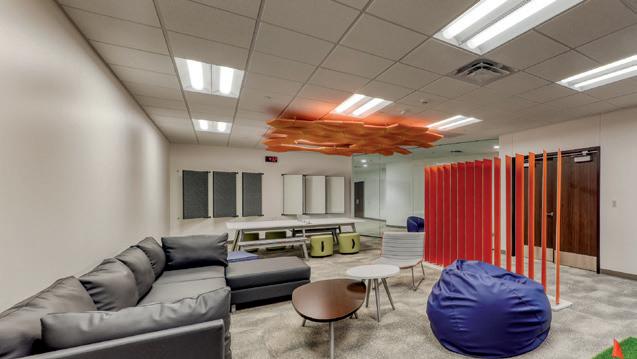Planes, Trains and Automation

A look at the future of transportation in DFW




A look at the future of transportation in DFW


ithout mobility, workplaces fall idle, emergency services cease, shops close, social activities get canceled. Even educational opportunities dry up. That won’t happen here. Can’t happen.
Not with DFW’s long love affair with transportation. Not with Tarrant County College’s dedication to education that keeps the wheels turning.
Our programs—especially in aviation, automotive and diesel technician, supply chain and logistics, and nondestructive testing— prepare the graduates needed to develop talent, fill gaps and propel growth in one of the largest, most active transportation hotbeds in the country.
Texas & Pacific Railway brought the first rail car to Fort Worth in 1876. General Motors opened its southwest plant in 1959. Dallas/ Fort Worth International Airport has been a staple of worldwide travel since 1973, and the Perot operation at AllianceTexas (now Perot Field Fort Worth Alliance Airport) was the world’s first purely industrial airport when it opened in 1989.
Moving people and cargo is in every aspect of our being. Amazon, Boeing, Lockheed Martin, FedEx, Airbus Helicopters, Toyota, Trinity Metro, American Airlines, BNSF Railways—all make North Central Texas an operational hub.
What began with a single steam engine plying primitive steel ribbons has exploded into a multibillion-dollar force, its components all connected.
Connected to Tarrant County College.
Just as transportation is constantly advancing, likewise, TCC keeps evolving to fortify employer expectations and extend industry trends. Our partnerships stretch from modest local businesses to global Fortune 500 companies.
At our Erma C. Johnson Hadley Northwest Center of Excellence for Aviation, Transportation and Logistics at AllianceTexas, industry leaders like Southwest Airlines, L3 Harris, Gulfstream and numerous
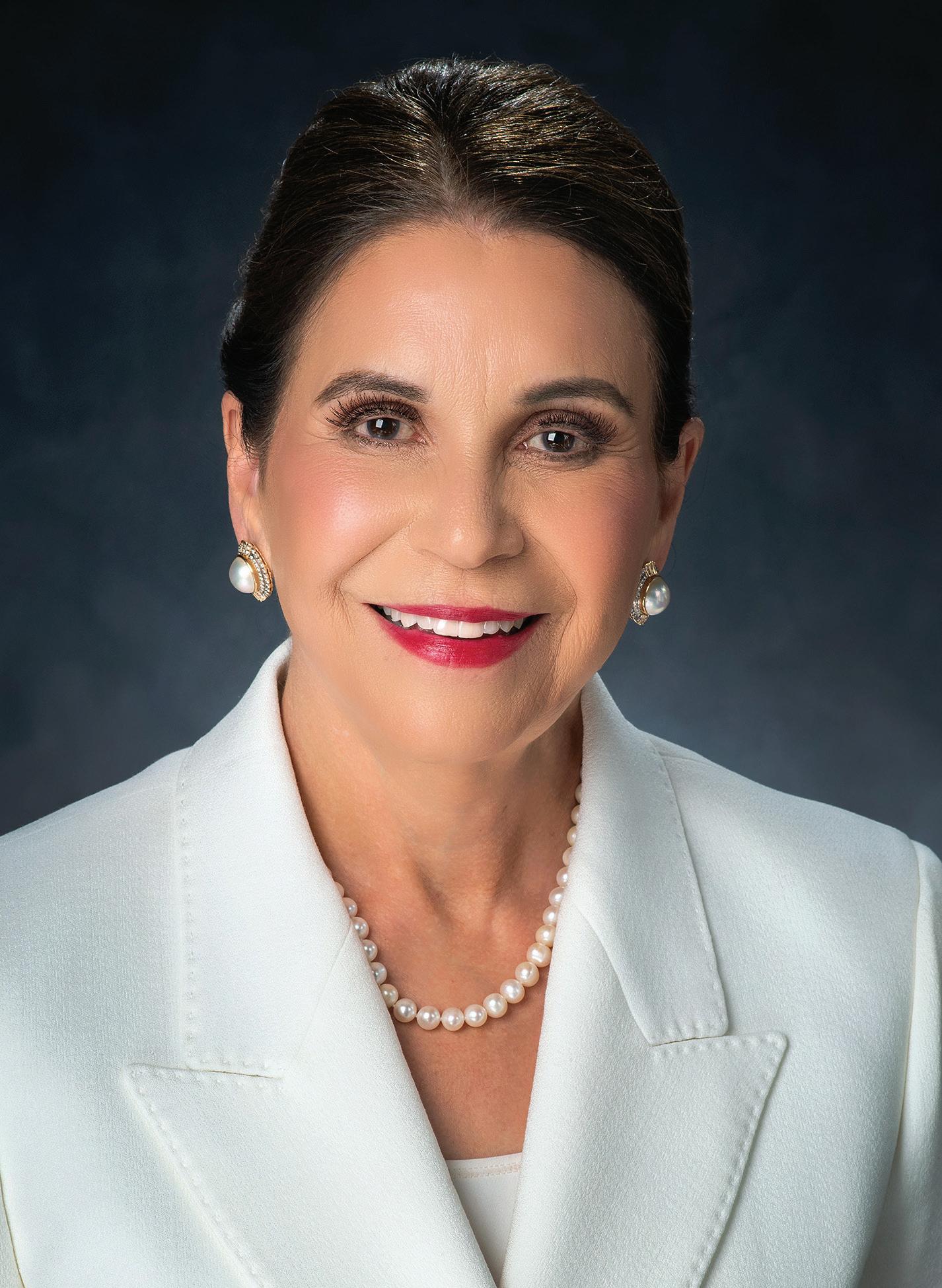
others seek out TCC Trailblazers for high-demand jobs before they even graduate. Collaborations with US Aviation Group and the Envoy/American Airlines Pipeline program provide pathways that point to top-dollar careers. And a new partnership with Veracity Aviation, one of the state’s premier flight schools and helicopter services providers, ensures our Trailblazers are flight ready.
TCC and the National Institute for Automotive Services Excellence have eliminated travel challenges for students and area automotive professionals needing to take ASE certification exams—the testing now can happen in Fort Worth. And a partnership with Toyota is producing skilled, trained service technicians for dealerships across the region.
Make no mistake, TCC is the community leader in delivering education and opportunity aligned with workforce demand. Our curriculum, instruction and facilities reflect a life-changing commitment to equip students to excel. It is a privilege to provide access to education of the highest order.
This latest edition of The Lens will sharpen the focus for you. Explore how TCC supports the transportation industry that drives local, state and national economies. See where we fit in. Hint, one word: Everywhere.

Elva Concha LeBlanc, PhD chancellor, tarrant county college district
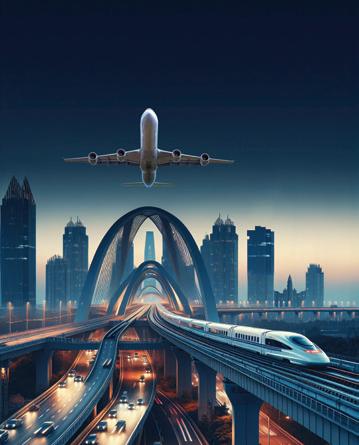

Its people-pleasing culture has earned it legions of loyal customers, yet Southwest faces headwinds as it contemplates a new flight path. by ian fitzpatrick, esq
Tarrant County’s gridlock. by jennifer blalock, edd
This issue is dedicated to exploring the dynamic world of transportation in Tarrant County and its profound impact on our community’s growth and connectivity. Transportation is the backbone of economic development, and Tarrant County is at the forefront of innovative changes that promise to redefine how we move. From Trinity Metro’s forward-thinking projects like the TEXRail commuter line to Tarrant County College’s commitment to training a skilled transportation workforce, we are witnessing a transformative era.
One of my favorite activities with my kids has always been crafting toy cars out of large cardboard boxes and various supplies. Over the years, we’ve made all kinds of vehicles—red cars, tall cars, three-wheeled cars and even wheel-less cars. While none of these were mobile, they brought us immense joy and created priceless memories. As my oldest son now drives an actual vehicle, I often reflect on these moments and wonder where the time has gone. He is going places, and as I look around, I am proud that he is growing up in a county that is also on the move.
Our cover story delves into the incredible advancements in public transportation spearheaded by Trinity Metro. These initiatives are not only easing commutes but also driving economic growth and sustainability. The future of transportation is here, and it’s efficient, connected and environmentally conscious.
Tarrant County College plays a pivotal role in this transformation by providing top-notch training and education to meet the growing demands of the transportation industry. TCC’s Center of Excellence for Aviation, Transportation and Logistics (CEATL) is a testament to our dedication to preparing students for the challenges and opportunities ahead. By partnering with industry leaders like American Airlines, we ensure our programs are aligned with real-world needs, fostering a future-ready workforce.
Aviation as a whole is experiencing significant growth, and with it, the need for a skilled workforce. The aviation industry in Tarrant County is booming, driven by technological advancements and increasing demand. Our programs at CEATL are designed to

produce graduates who are ready to meet these industry needs, ensuring that Tarrant County remains a leader in aviation excellence.
In addition to our academic programs, TCC’s Corporate Solutions and Economic Development (CSED) department offers extensive programs to support incumbent workers across various industries. CSED is dedicated to upskilling, reskilling and creating mentorship programs to ensure our workforce remains competitive and adaptable. These initiatives are crucial to meeting the evolving demands of today’s job market and fostering a culture of continuous improvement and professional growth.
As you navigate through this issue, I hope you gain insights into the significant strides being made in transportation within our region. These stories of innovation and progress reflect our community’s spirit of resilience and determination to move forward.
Thank you for joining us on this journey of exploration and discovery. Let’s keep the wheels turning, drive progress together and ensure that future generations continue to go places and thrive in a county that’s always on the move.

Jacquetta Dantzler editor-in-chief, the lens

EDITOR-IN-CHIEF
Jacquetta Dantzler
Interim Executive Vice President
Princess
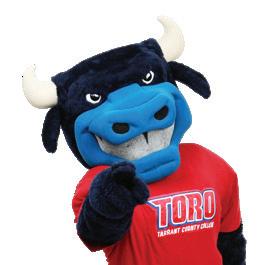
CHANCELLOR
Elva LeBlanc,
BOARD
Teresa Ayala, President Kenneth Barr, Vice President
Jeanne Deakyne, Secretary Leonard Hornsby, Assistant Secretary
Shannon Wood
Laura Forkner Pritchett
Gwendolyn Morrison
EDITORIAL ADVISOR
Reginald Gates
PRESIDENT/CEO Kimberly Ferrante
GROUP PUBLISHER Adam Pitluk, PhD
CREATIVE
David Halloran
Becky Williams

jennifer blalock, edd
Jennifer has spent over two decades leading teams in postsecondary education and municipal government. As the CEO of InJenuity Solutions, Jennifer develops, facilitates and evaluates workforce, economic and organizational development programs.
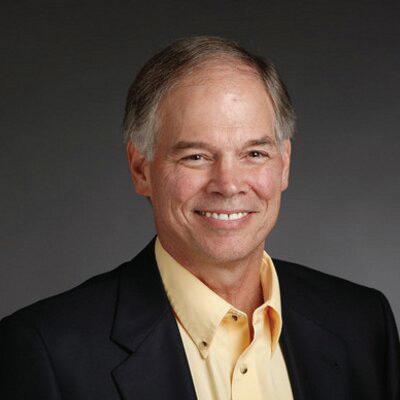
rick gosselin
A longtime sports reporter and columnist for The Dallas Morning News, Rick has covered the NFL for 50 years. He was enshrined in the writers’ wing of the Pro Football Hall of Fame in Canton, Ohio, in 2004. He is the featured columnist for The Lens

adam pitluk, phd
Adam is an award-winning journalist and the author of Standing Eight and Damned to Eternity. He was a reporter for TIME and People magazines, and is the former editor-inchief of American Way. He is the publisher of The Lens

heide brandes
Based in Oklahoma City, Heide is an award-winning journalist whose work has appeared in Forbes, The Wall Street Journal, The New York Times and The Washington Post, among others. She is also a historic reenactor and an avid hiker.
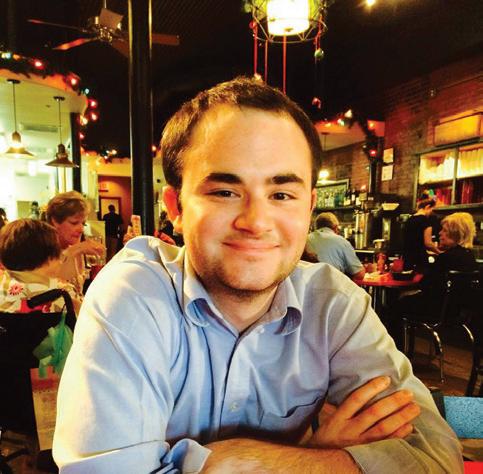
tyler hicks
Tyler is a writer and journalist from Austin, Texas. His work has appeared in The New York Times, Al Jazeera, Texas Monthly and many other newspapers, magazines and websites across the country.

samantha ozeale tucker
Samantha is attending Tulane University with plans to earn degrees in cell and molecular biology and studio art. She regularly contributes illustrations for The Lens magazine and recently completed a wall mural for a pediatric therapy facility.

ian fitzpatrick, esq
An award-winning journalist, Ian has written and spoken about workplace diversity and travel topics around the world. Based in Silver Spring, Maryland, he practices law in Maryland and Washington, D.C.

jacquetta dantzler
Jacquetta has devoted the last 18 years of her career to partnering with entrepreneurs and small business owners. Additionally, she is a published author with a diverse body of work that ranges from poetry to textbooks.

sally verrando
Sally is an award-winning journalist in DFW. She has been published by The Dallas Morning News, KERA and other Texas media outlets. A seventhgeneration Texan, she loves travel, animals and bluebonnets.

greg fulton
Greg is a career writer whose work has appeared in daily and weekly newspapers, CNN, salon.com and many other publications. He is the former South Bureau Chief of TIME magazine and a contributor to American Way magazine.

vanessa orr
Based in Pittsburgh, Pennsylvania, Vanessa has been a freelance writer and editor for more than 25 years. Her work has appeared in hundreds of regional and national publications including the Pittsburgh Post-Gazette and Alaska Business Monthly

nisani walser
Native New Yorker Nisani is a journalist who writes about the intersection of urban life and culture. She is a contributor to the North American Travel Journalists Association’s TravelWorld magazine.
Advertising in The Lens magazine doesn’t just align your organization with high-quality content in an award-winning publication. Being part of both the print and digital editions of The Lens also puts your business in front of thousands of readers, including Tarrant County executives, entrepreneurs and economic development professionals. Secure your spot today to reach the decision-makers you want as clients.








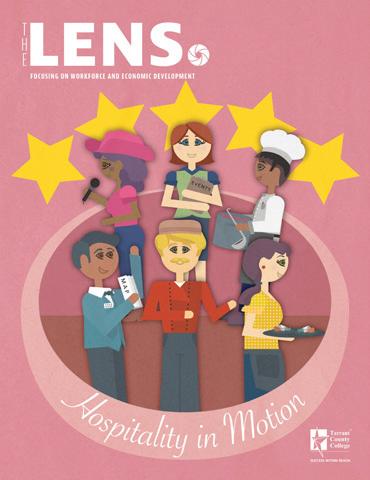
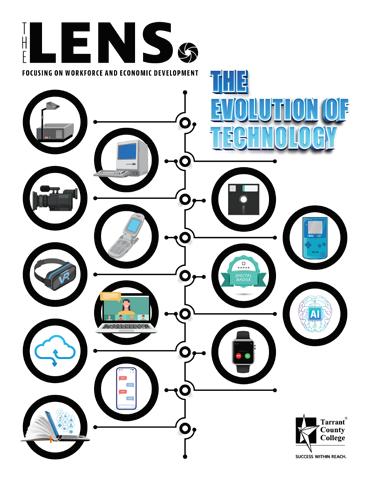
for advertising opportunities, please email our publisher at info@midwestluxurypublishing.com we look forward to working with you!
The stats on transportation's impact on the U.S. economy.
TRANSPORTATION ACCOUNTED FOR OF THE U.S. GROSS DOMESTIC PRODUCT IN 2022 9%
15.8 million
PEOPLE EMPLOYED BY TRANSPORTATION AND TRANSPORTATION-RELATED INDUSTRIES IN 2022
U.S. airlines carried 84.8 million systemwide (domestic and international) scheduled service passengers in March 2024.
Amtrak served 23 million passengers is 2022, an increase of more than 12 million over fiscal year 2021.
There are currently 64.6K public and available EV charging stations in the U.S.
24.4
MILLION PEOPLE
WORKED FROM HOME IN 2022
EXCEEDING CARPOOLING IN 2021 TO BECOME SECOND TO DRIVING ALONE TO ACCESS WORK
1.4
MILLION
HYBRID ELECTRIC VEHICLES (HEV), PLUG-IN HYBRID ELECTRIC VEHICLES (PHEV) AND BATTERY ELECTRIC VEHICLES (BEV) WERE SOLD IN THE UNITED STATES IN 2021.
Trucking maintained its status as the dominant mode of freight transportation by both weight and value in 2022, moving 12.6 billion tons of cargo valued at over $13.6 trillion . This represented 64.5 percent of the total freight weight and 72.5 percent of the total value.

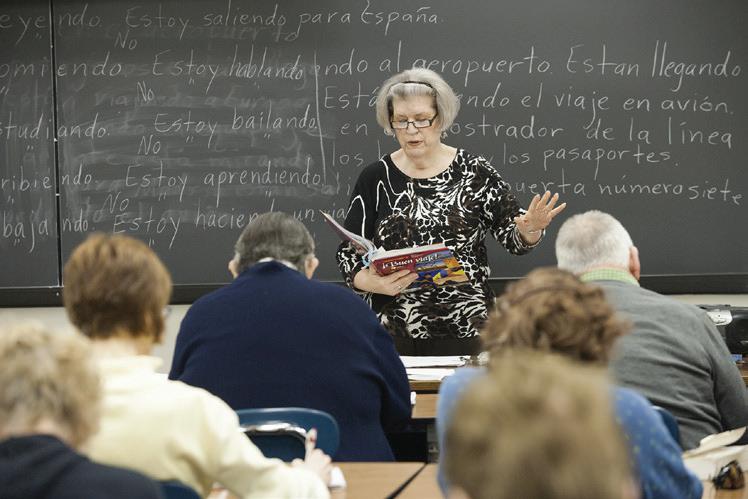





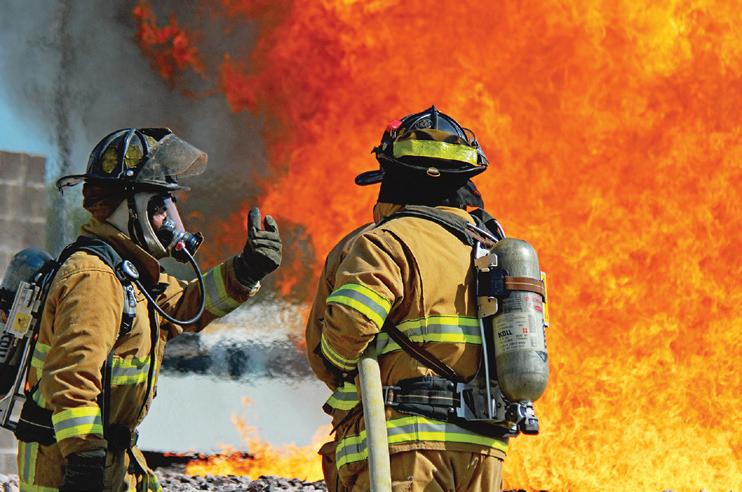

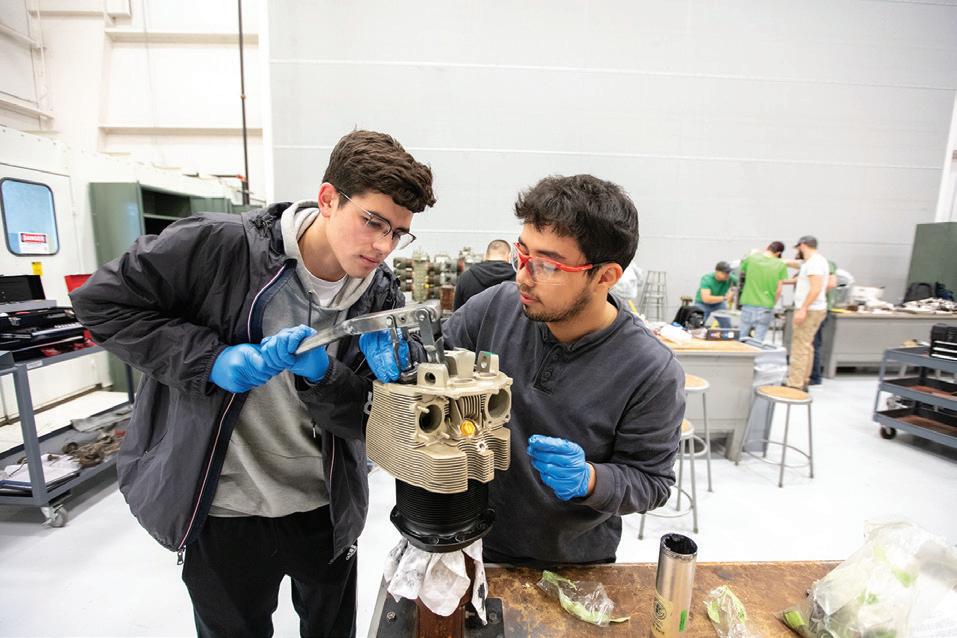


As Tarrant County College’s Center of Excellence for Aviation, Transportation and Logistics (CEATL) celebrates its 10th anniversary, the state-of-the-art facility is soaring to even greater heights. Over the past decade, CEATL has established itself as a powerhouse for aviation workforce development in North Texas, cultivating a talented pipeline of pilots, mechanics, logistics experts and more for the region’s booming air transportation industry.
TCC’s aviation programs are driven by the workforce demands seen locally, regionally and nationally. CEATL works hand-in-hand with industry partners to understand their hiring needs and priorities, then builds its curriculum to train students accordingly.
This close collaboration has been pivotal to CEATL’s success from the very beginning. When TCC acquired the 163,500-square-foot facility from Bell Helicopter in 2013 to consolidate its scattered aviation programs, input from major local employers like American Airlines and Lockheed Martin was instrumental in reshaping the sprawling complex into a world-class training center.
In the decade since, CEATL has rapidly expanded its program offerings in lockstep with industry needs—from airframe and powerplant mechanics to professional pilots, aviation electronics, logistics management and more. Its cutting-edge facilities include an aircraft hangar, an avionics lab, computerized test benches, a warehousing simulation lab and even a radar simulation center for air traffic controllers.
“CEATL has been instrumental in shaping the future of aviation by providing top-notch education and training to aspiring professionals,” says Dr. Zarina Blankenbaker, president of Northwest Campus at Tarrant County College.
Employers have certainly taken notice. Major players like Bell, American Airlines, Boeing, Southwest Airlines and more actively recruit CEATL graduates, valuing the current, job-ready skills they possess. In fact, many students secure employment even before graduating.
Looking back on CEATL’s trajectory, the growth has been stratospheric. What began with just the aviation maintenance technology program has multiplied to 11 degree and certificate offerings across five specialized areas, including Aviation Maintenance Technology (Airframe, Powerplant, Avionics,
Composites), Professional Pilot, Aviation Electronics, Logistics & Supply Chain Management, Non-Destructive Inspection, Testing & Evaluation and Welding Technology
“We’ve been incredibly responsive as new, in-demand job roles have emerged,” Blankenbaker says. “Programs like our NDI/NDT and avionics curricula directly answer the call for more trained personnel in those specialties.”
The NDI/NDT program, launched just last year, is a perfect example of CEATL’s entrepreneurial, forward-thinking approach. There was a recognized need for more inspection experts, especially in the aerospace sector. So TCC formed an advisory board with members from Bell, Boeing, Blue Origin and others to design a comprehensive curriculum teaching skills like radiography, ultrasonics and eddy current testing.
“This program’s techniques and certifications apply across various industries, but we really tailor it for aerospace,” Blankenbaker says. “Most local aerospace companies require their inspectors to be certified to [National Aerospace and Defense Contractors Accreditation Program] quality standards, so that’s built into our curriculum as well.”
The first cohort of NDI/NDT graduates walked the stage in spring 2024. Many had jobs lined up already with employers like Verifi, Texas Aviation Services, Vandergriff Technologies and Blue Origin.


“CEATL has been instrumental in shaping the future of aviation by providing top-notch education and training to aspiring professionals.”

“This program’s techniques and certifications apply across various industries, but we really tailor it for aerospace.”
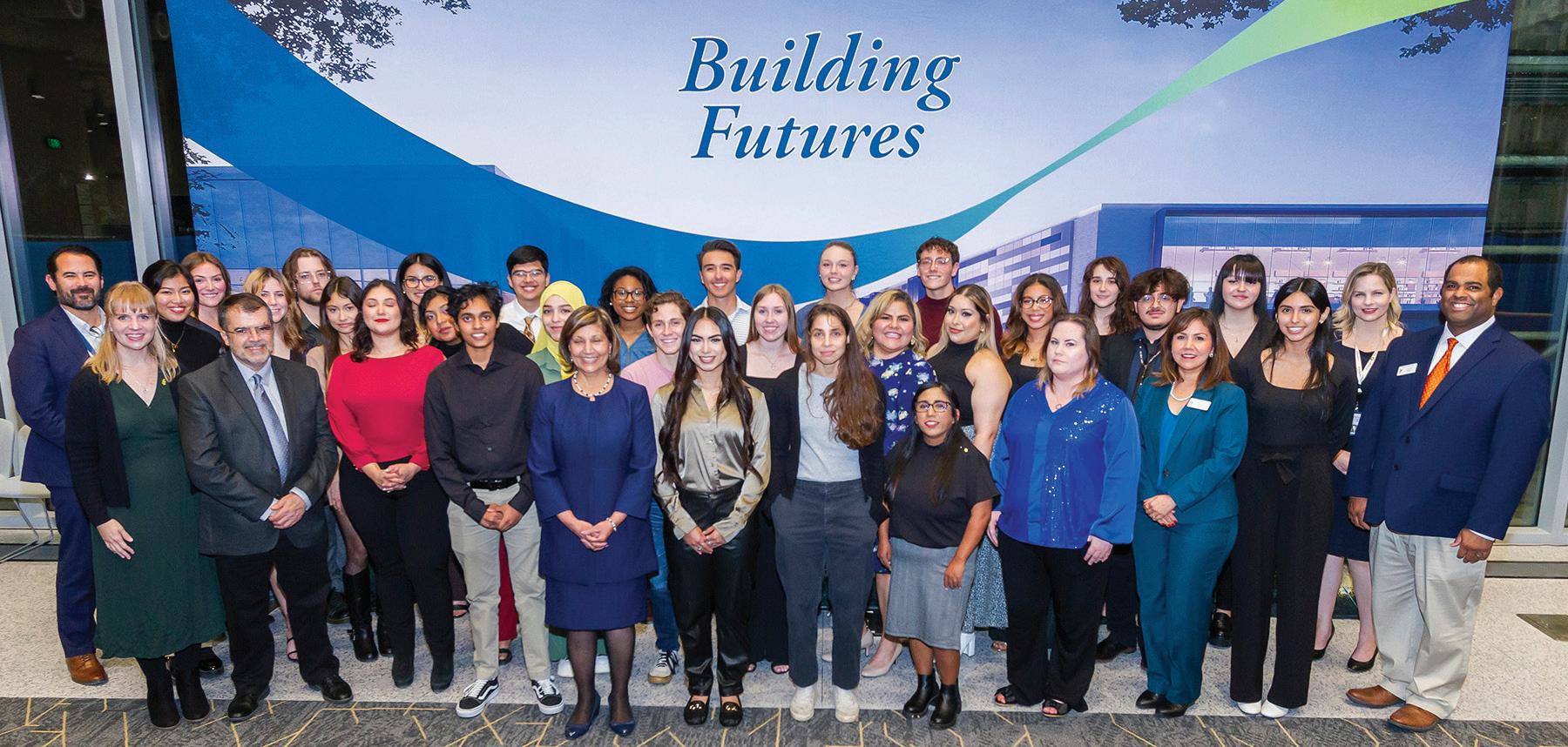
Similar success stories abound across CEATL’s programs. Aviation maintenance graduates get snapped up by national airlines like Southwest and American Airlines (see “Dynamic Duo” story on page 14). The professional pilot coursework, with its FAA Part 141-approved curriculum and direct path to a Restricted Airline Transport Pilot (ATP) certificate, sends newly minted pilots directly into the recruitment pipelines of Envoy/American Airlines and other major carriers.
The need is there. The Aviation Maintenance Technology (AMT) Program through CEATL was the first public program in Texas, established in 1967. Throughout TCC’s 50-plus-year history, it has grown to be the largest aviation program among community colleges in the state and one of the largest in the nation.
According to the 2023 Boeing Pilot and Technician Outlook, the aviation industry will need nearly 2.3 million new professionals through 2043, including 690,000 maintenance technicians. The Professional Pilot Program, launched in 2014, was designed to meet the aviation industry needs of 649,000 professional pilots through 2043.
On the logistics side, the capstone coursework provides direct work experience and a pathway to internships and jobs at operations like Frito-Lay, DHL and UPS. Virtually every segment of the air transportation workforce has a steady influx of CEATL talent.
“These aviation programs are providing incredible economic impact for our region,” Blankenbaker says. “We’re pumping out qualified personnel to fill all these in-demand roles. That’s the fuel for sustained industry growth.”
As CEATL looks ahead to its next decade and beyond, the future stretches out as boundless as the North Texas skies.
Projected job growth for roles like aircraft mechanics, pilots and logisticians looks robust through the 2030s, and emerging technology fields like drone operations, advanced air mobility and sustainable aviation could spawn whole new areas of study.
“The success and achievements of the past decade are a testament to this dedication and excellence,” says Mike Esquivel, dean of Business and Industry at the Northwest campus. “TCC Northwest looks forward to continuing our partnership with industry leaders, working together to achieve even greater heights and meet the evolving needs of the aviation, transportation and logistics sectors.”

CEATL’s comprehensive approach of combining faculty expertise, authentic hands-on training and deep employer partnerships has been a winning formula so far. More than 1,200 CEATL graduates have entered the aviation and logistics workforce over the past 10 years. With North Texas establishing itself as a global aviation powerhouse, that number will only continue its climb.
“The success of CEATL’s first decade just previews what’s yet to come,” Blankenbaker says. “Our aviation programs are crucial economic engines providing companies with the highly skilled talent they need to thrive. We’re just getting started on establishing TCC as the premier source for developing the aviation workforce of the future.”



Hillwood’s Alliance Air/Aviation Services President Christian Childs explains why partnering with TCC’s CEATL program helps his brand.
by heide brandes
Since 2001, Christian Childs has been a leader in different business units within Hillwood, most notably, the Alliance Aviation Companies at Perot Field Fort Worth Alliance Airport. Childs began serving as president of Alliance Aviation Services in 2021, overseeing the operations on the ramp and inside the FBO facility and growing the airport to one of the top 20 cargo airports in the U.S. while providing exceptional, award-winning customer service. He recently spoke to The Lens about Hillwood’s synergy with TCC’s CEATL program.
In what ways is Alliance Aviation involved in TCC’s CEATL program?
Alliance Aviation Services provides fuel and customer service for CEATL’s flight program. We also help TCC with many operational matters throughout the year. This includes construction projects, additional aircraft parking needs, TCC events, etc.
Why are connections between employers and education so important, especially in the aviation industry?
The aviation industry is steeped in tradition and nostalgia, but it also changes rapidly. Employers rely on educational curriculum like TCC’s CEATL program to produce an agile workforce equipped to keep up with the ever-changing technology in aviation. This
keeps employees and employers marketable throughout all facets of the industry.
How does CEATL meet your workforce needs?
We have the privilege of having several CEATL students on our team while they complete their pilot or maintenance technician programs. Students work right next door to the school, gleaning behind-the-scenes insight into their future careers. You receive a paycheck while in training and network with the best in the business. We’ve seen several students graduate from CEATL then go on to work for companies they served while helping our organization. It doesn’t get better than that.
Maybe a few words about the training that students receive in the program and any input your company had on that training, if any.
CEATL is a well-respected, sought out program by industry partners. We share industry trends with CEATL leadership, and one of our executives serves on the TCC Board. We’ve had the opportunity to work with several CEATL students over the past 10 years, and historically, they are some of our top performers, whether in customer service or on the flight line. The CEATL program elevates any resume instantly.
Dynamo’s father-and-son business model has gained a foothold in private aviation. by nisani walser
With the increase of passengers and cargo in recent years, the International Civil Aviation Organization (ICAO) states the projected demand for air transport will increase by an average of 4.3% per annum over the next 20 years, thereby contributing to roughly 100 million jobs and $5.7 trillion worth of GDP. This is a dramatic increase in demand for all aviation-related jobs. While the public aviation sector is still recovering in the wake of the pandemic, the private sector looks promising to young adults interested in aviation careers with small businesses that are mobilizing on their own terms.
Established in 1986, Dynamo is a private father-and-sonowned aviation company based in Los Angeles. They focus on airplane and private jet machinery. In 2013, Dynamo acquired Trimec, and since then has worked on upscaling. Vice President (and son) Peter Rabadi has been working with his father Mike for over 14 years and has managed to attain a high employee retention rate. Dedicated to quality, innovation and service, Dynamo’s unique competitive advantage is its investment in employee training, starting with foundational skills to obtain certifications to work on aircraft.
Dynamo is also creative with incentives to ensure that employees are happy and growing professionally. In comparison to large corporations, Dynamo’s family business model helps them stay reactive and provide employees with benefits including 401Ks, medical and health benefits; salaries that meet the market standard; team-building events and the opportunity for upward mobility.
“To us, it’s a big deal that employees are treated like family,” Peter says. “My family and I always believe that we’re not working just with 120 employees; it’s really 600 people we’re taking care of or more because you’re taking care of not just the employee, but the family behind them.”
Combined, Dynamo and Trimec have approximately 200 workers including veterans, seasoned aviation mechanics and, most notably, Tarrant County College graduates. Older employees who’ve been present since the enterprise’s establishment collaborate with the new generation to exchange knowledge and wisdom. This allows Dynamo to stay innovative and meet the growing need for mechanics in the private aerospace sector.
“Our manufacturing has boosted significantly after COVID for our own products,” Peter says. Dynamo was awarded the coveted Top Dealer Award by Gogo in 2023 and Universal Avionics in 2024 and plans to continue scaling to meet the needs of a growing industry and an innovative aviation generation.

by vanessa orr
While autonomous vehicles (AVs)—those that use technology to navigate from one place to another without a human driver—were once the stuff of fantasy, today they can be found on roads all over the nation, and their numbers are increasing. To date, AVs have driven more than 70 million miles on U.S. roads—a 59% increase since July 2023.
“It is awe-inspiring to see the progress autonomous vehicles are making in the United States. What was once science fiction is now a reality on our roads and in our communities,” says Jeff Farrah, chief executive officer of the Autonomous Vehicle Industry Association (AVIA), in the 2024 State of AV report. “From trucks to robotaxis to zero-occupancy delivery vehicles, AVs are changing the way we move people and goods. The future of transportation has truly arrived.”
In Texas, this is especially significant as it is considered one of the top states for AV expansion. Along with Florida and Arizona, it is also considered to have one of the best regulatory environments for autonomous vehicles. In 2017, the Texas Legislature passed a bill that allowed for testing and operation of autonomous vehicles on public roads, putting regulation and oversight in the hands of the state government rather than local municipalities.
“Texas offers a number of compelling advantages,” says Continental’s Ibro Muharemovic, head of Autonomous Mobility North America. “The state boasts a large, young and growing workforce. We have access to a wide range of qualified candidates when hiring, along with a future pipeline of talent. Additionally, Texas is a major transportation hub with access to major highways and proximity to shipping ports. This strong infrastructure makes it a great location to further develop automotive innovations.”
Texas is already home to several autonomous vehicle and ADAS (Advanced Driver Assistance Systems) manufacturers. Waymo, for example, is currently testing fully autonomous rides across 43 square miles of Austin and will be opening Waymo One to members of the public later this year, making Austin Waymo’s fourth ride-hail city.
In September 2023, Continental celebrated its first year of operations in New Braunfels, where it produces ADAS technologies.
“We’ve made significant progress with ADAS, which are now widely available and provide critical safety features such as lane departure warning, automatic emergency braking and adaptive cruise control, paving the way for higher levels of autonomy,” Muharemovic says. “As more and more miles are driven, more sensing, computing and vehicle architectures are established.
This helps refine operating domains and conditions as well as capturing complex challenges on the roadway such as unlikely or unexpected scenarios.”
Continental has been producing radars since 1998, and the growth of radars and ADAS solutions was a key driver in its choice to expand its manufacturing capabilities in the U.S. with the New Braunfels location. It is currently developing the safety path (fallback system), sensors and computers required for selfdriving alongside its partner, Aurora Innovation.
While the idea of being able to hop in a car and have it take you to your destination without any assistance from a human is exciting, there’s an even more important reason that manufacturers are looking to create AVs.
According to the National Highway Traffic Safety Administration (NHTSA), approximately 94% of motor vehicle crashes are caused by human error. More than 44,000 lives were lost in traffic crashes in the United States in 2023, a 13.6% spike compared to pre-pandemic 2019, according to the National Safety Council (NSC), a nonprofit advocacy group.
AVs are expected to reduce the number of crashes and fatalities as cars will be controlled by technology, rather than people. According to the NHTSA, ADAS could prevent up to 2.3 million crashes and save 12,000 lives each year.
Muharemovic says that as drivers interact more with ADAS technology and see how it can serve as an extra pair of eyes in the vehicle, the more they will trust the technology. That trust level is now about 50/50 in the U.S., according to a mobility study conducted by Continental in 2022.


“Texas is a major transportation hub with access to major highways and proximity to shipping ports. This strong infrastructure makes it a great location to further develop automotive innovations.”

“At Continental, safety is our number one priority,” Muharemovic says. “Currently, the systems we have in development use a fusion of three types of sensors (radars, cameras and lidars) to minimize external or environmental impacts. Furthermore, we apply redundancy in power, computation and algorithms.”
While ADAS technology is rapidly evolving, it is still not where it needs to be, especially when performing specific tasks. A 2019 report from AAA titled “Automatic Emergency Braking with Pedestrian Detection” showed that these systems were ineffectual at night and did not react at all when turning right into the path of an adult, resulting in collisions 100% of the time.
According to Uhnder Vice President of Sales and Marketing Max Liberman, on the Society of Automotive Engineers (SAE) automation driving scale, which ranges from 0 (fully manual) to 5 (fully autonomous), most vehicles today are at Level 1 or 2.
“Our goal is to improve those systems as a first step so that as you get to Level 2-plus and 3—when drivers start taking their hands off the wheel—the sensor technology has significantly improved,” Liberman says. Uhnder produces the world’s first digital imaging radar-on-chip that perceives objects that cameras, lidar, traditional analog radar and the human eye can easily miss.
He notes that even when the technology is ready, the automotive world moves very slowly, meaning that AVs on the consumer level will still take years to get to market. “When it involves safety, people are afraid to make changes, and rightly so,” Liberman explains. “Car companies will begin putting advanced technology in as newer vehicles are designed, but it will still take years to get to the consumer market. I see an inflection point in model years 2026, ’27 and ’28 when these companies start transitioning to higher-resolution systems.”
He adds that while cars with low-end sensors can handle easy-use cases, like driving on straight roads with low traffic
and little chance of collision, driving in a city like Fort Worth, where there are on/off ramps, pedestrians walking around and lanes of merging traffic, will require much more complicated sensors to ensure safety.
While fully autonomous vehicles are not yet ready for the showroom floor, within a couple of decades, people should be able to own their own AVs.
“If you think back five, six, seven years, everyone thought we’d all be driving autonomous vehicles by now, but the truth is, it’s a very complicated problem to solve,” Liberman says. “It takes a while to improve sensor technology, improve algorithm technology and improve mapping technology. By the time we get costs going the right direction, we’re probably 10 to 15 years away.
“As an example, for us to develop a better radar sensor has taken seven years of development,” he says. “And it’s very, very expensive to develop this stuff.”
Liberman adds that while it’s easy to make one of something that is really high-performance, it’s very difficult to break down those costs so that a person can walk into a dealership and buy the same vehicle.
Despite these challenges, it still seems like autonomous mobility is an idea whose time has come.
“In addition to making roads safer, autonomous mobility can also have a significant impact on the environment,” Muharemovic says. “With the rise of electric and autonomous vehicles, we can reduce our dependence on fossil fuels and decrease harmful emissions. This dual benefit of safer roads and reduced environmental impact makes autonomous mobility a compelling solution for the future.”



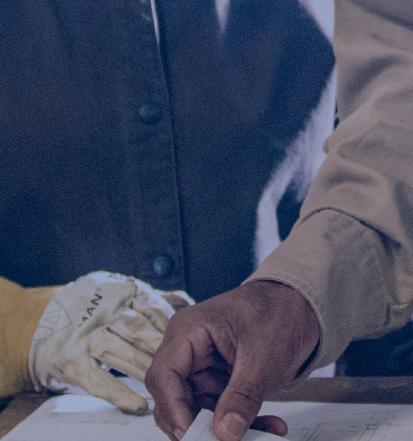





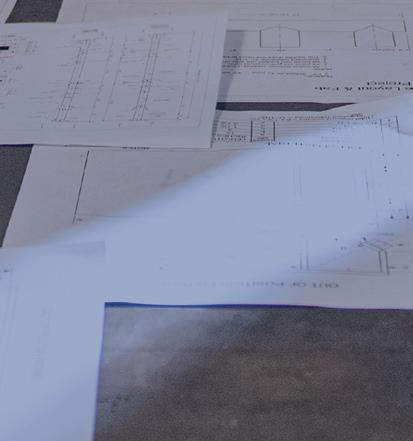










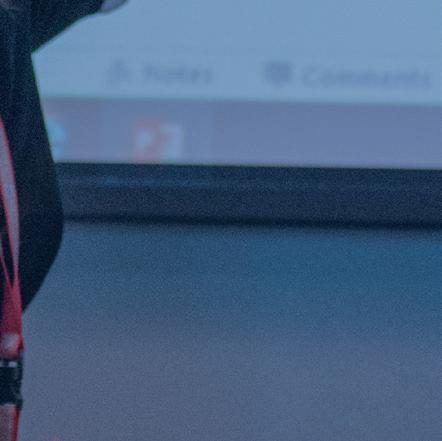









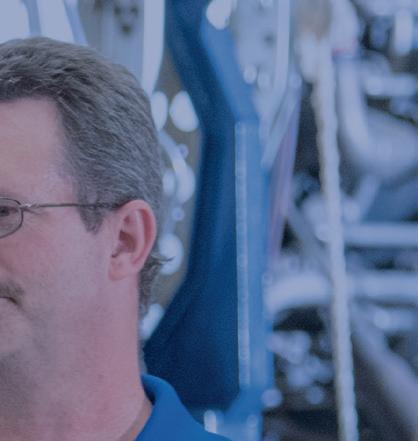

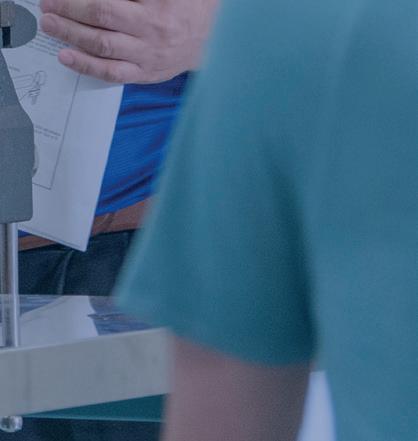


Fort Worth Transportation and Public Works’ Kelly Porter lays the track for the next 25 years. by sally verrando
Kelly Porter has a thing for signals, signs, maps and geography. It’s an interest he developed as a kid.
“I’m kind of an odd one in the sense that I’ve wanted to be a planner since I was 6 years old,” he says, citing his early years as the catalyst for a lifelong interest in city planning and land use.
Porter is one of the assistant directors of Fort Worth Transportation and Public Works, managing the Regional Transportation and Innovation Division for two-and-a-half years and planning the city’s transportation future.
From the Southeast Connector project to alternative transportation, Porter knows that interconnecting North Texas is a team endeavor. He took time to sit with The Lens to discuss his vision of the future.
With Fort Worth being one of the fastest growing cities in the country, how are you keeping up with roadway demands for the near future?
We do a bond program every four years, so we’ve been able to build out and recapitalize a lot of our infrastructure to try to meet demands. We’ve also tried to be more aggressive about leveraging federal and state dollars through partnerships with our regional transportation council and the federal government. In 2026, we have our next bond program, which helps us fund another wave of capital projects.
What’s the next big project in Fort Worth after the Southeast Connector is completed?
You’ll see quite a few big projects happening with the Texas Department of Transportation’s work on U.S. 287 North going up towards the Haslet-Saginaw-North Fort Worth area, expanding that road and adding in frontage roads. We’ve also been working with TXDOT on improvements to the I-30 West Freeway and East Freeway.
We’ve been trying to invest over the last several years not only in our roadway infrastructure for cars but also in other ways to move people and goods, such as pedestrians and bicycles in micromobility infrastructure. We’re trying to make that infrastructure safer and more comfortable, so you’ll see us adding protection between bicycles, sidewalks and cars. We’re spending a lot of time working with our transit agency on various projects. The TEXRail extension into the hospital district near Southside will bring that train line into a big job center.
We’ve also been working with Trinity Metro on enhanced bus stops across the city with new bus pads so people have dry ground to stand on and improved shelters to make transit more comfortable for folks to use. The red bus lanes will help with operations on Jones Street to increase visibility, ease congestion and improve safety.
Fort Worth is the largest Amtrak station in Texas. We’re looking at potential extensions up to Kansas City as well as a line that will go to Atlanta, in addition to the current service to Chicago, Los Angeles, San Antonio and Oklahoma City.
One of the biggest things we’re trying to do is also look at our land use and create more walkable communities, providing more options for people living closer to where they work and offering more amenities within their neighborhoods. A good land-use plan is a good transportation plan. We’re also looking at broadband high-speed internet as a form of transportation because we found out in the pandemic that it’s key to people being connected to the rest of the world. That’s really what transportation’s about—connecting people.
What’s your vision of Fort Worth 50 years from now? Fifty years is a long time. I can tell you that right now is an exciting time to be in Fort Worth. Our horizon year is 2050.
My team is going to lead the Moving a Million Master Transportation Plan, which will be the first fully integrated multimodal transportation plan in the city. It’ll help guide our transportation capital investments, coordinated with land use and our city policies, for what transportation looks like over the next 25 years.
High-speed rail would put us in a league of cities enjoying that level of connectivity. The North Central Texas Council of Governments has been the lead on the segment from Fort Worth to Dallas. We’re super excited about having a station.
Taking care of our folks that live here and invest here is important to us in being a world-class city, to being a truly livable and green city going forward. Public involvement is really the cornerstone. It’s important to be involved and for people to share their thoughts on what kind of city they want to live in.

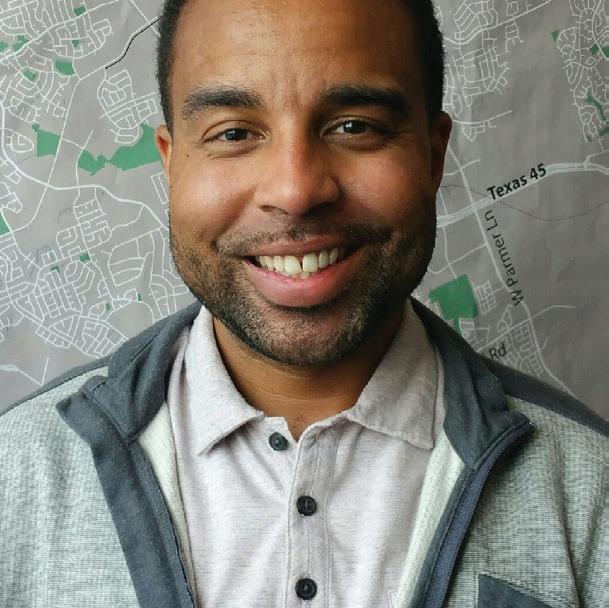

As Dallas and Fort Worth skirmish over the anticipated high-speed rail corridor connecting its cities to Houston, the North Central Texas Council of Governments (NCTCOG) referees to keep the decade-long project on track.
“Our interest is in finding a win-win solution to advance this project and continue moving us forward,” says Brendon Wheeler, NCTCOG’s program manager of transportation planning and metropolitan transportation plan. “These kinds of conversations from Dallas and Fort Worth are very timely as part of this transparent process. We’re trying to address the concerns as we go.”
NCTCOG supports the “one-seat ride” so travelers don’t change seats or trains while making the trip from Fort Worth to Houston in about two hours.
Besides the benefits of convenience and service, the number of vehicles taken off congested roadways would be significant, he says. Reducing road traffic can only help as forecasts predict North Texas’ population will grow from eight million to 12 million by 2050.
The Texas project is in the middle of an extensive 12-month review of the National Environmental Policy Act, involving several federal and state agencies. At the conclusion of the study, Wheeler estimates affected communities will hold public meetings by the end of this year or the beginning of 2025.

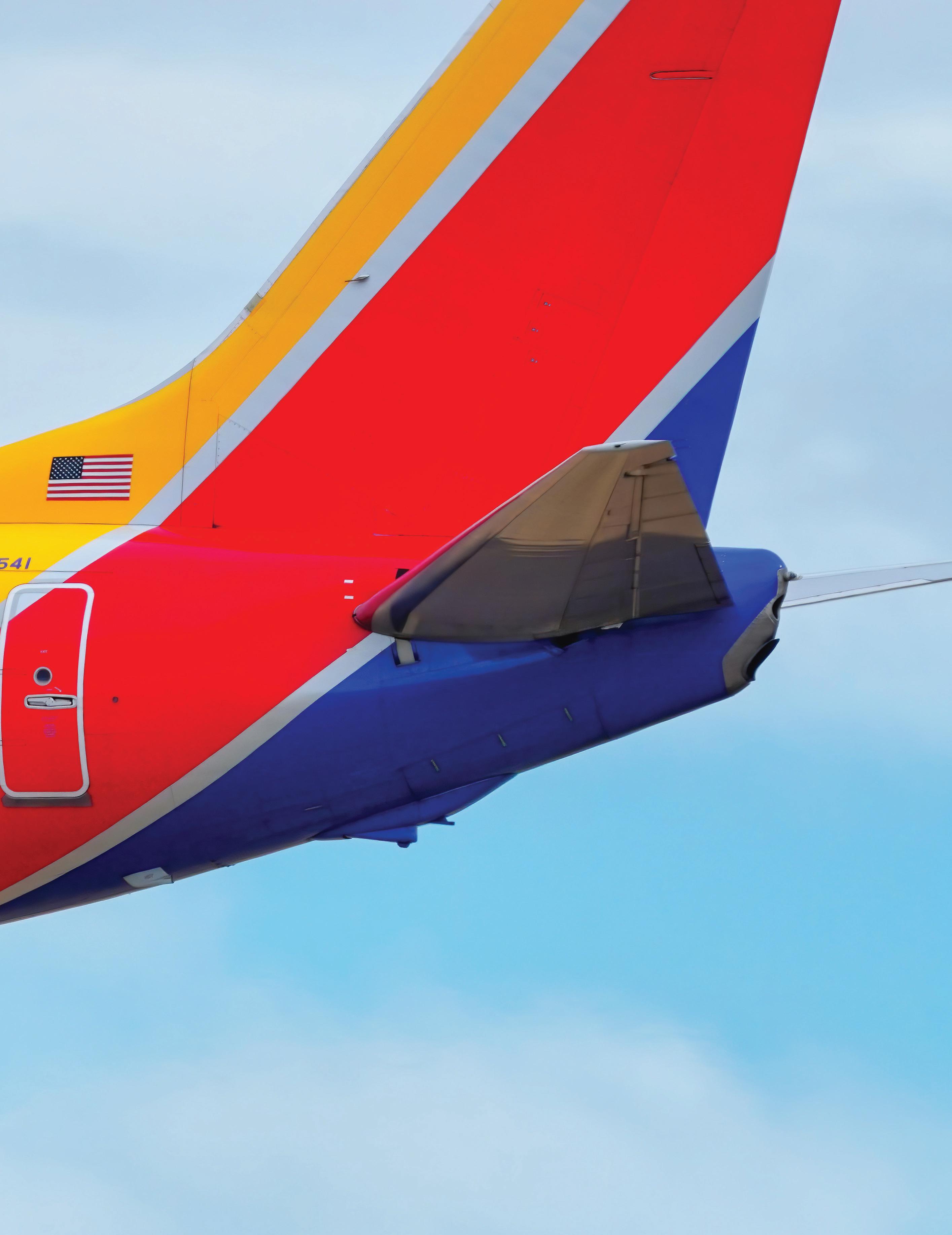
Its people-pleasing culture has earned it legions of loyal customers, yet Southwest faces headwinds as it contemplates a new flight path.
by ian fitzpatrick, esq.
—The date that marks Southwest Airlines‘ birth—is a seminal moment in America’s airline history. The Dallas-based upstart launched service from Dallas Love Field, Houston Intercontinental and San Antonio with $7 million in the bank and three Boeing 737-200 aircraft that Southwest got at a deep discount because of overproduction by Boeing.
On November 14, 1971, with dwindling cash, Southwest dropped service to Houston’s Intercontinental in favor of close-in Houston Hobby—better suited to the business traveler. From that day forward, Southwest found a winning strategy, one that would lead it to become the most successful and profitable passenger airline in U.S. history, achieving 47 years of unbroken profitability from 1973 to 2019 (broken only by the COVID-19 pandemic that upended Southwest and other airlines worldwide).
Pursuing profits over market share, focusing on the business traveler with affordable fares and convenient schedules, and flying one aircraft type when other airlines were flying multiple types of planes are but a few of the hallmarks of Southwest’s winning strategy. But while Braniff and Continental (which acquired Texas International in 1982) have disappeared, Southwest has persevered where other airlines haven’t because it has done things its way, by emphasizing profitability, having a clean and relatively unencumbered balance sheet and a low-cost structure, offering
point-to-point service, utilizing secondary airports in big cities and putting people first—whether customers or employees. It’s a simple formula, yet few airlines have been able to consistently execute like Southwest over the long haul.
From the little airline that could to becoming a fierce and competitive force in the industry, Southwest was primed and ready for another seminal moment in aviation history. On October 24, 1978, President Jimmy Carter signed into law the bill that would deregulate the U.S. airline industry. Since then, carriers such as Pan Am, Eastern, TWA, Northwest, US Airways and upstarts such as Virgin America, America West and AirTran have disappeared.
A growing number of airline analysts, investors and other experts are questioning whether a more dramatic mid-course correction is needed at Southwest, but at its own initiative, Southwest slashed approximately 20% of its flights in Atlanta last spring in what appears to be the start of several cost-cutting moves by the airline. It should be noted that Southwest sought to build its presence in Atlanta with the acquisition of AirTran in 2011, where it has historically been second in market share to Delta Air Lines.


In a case of giving your gunpowder to the enemy, Southwest sold 88 Boeing 717s acquired in the AirTran deal—which were not compatible with Southwest’s all-Boeing 737 fleet philosophy— to Delta in 2013 for $100 million. At that time, Delta had a significant number of former Northwest Airlines executives and managers—including the then-Delta CEO Richard Anderson, who came over from Northwest and knew how to exploit and utilize the 717s—a replacement for the aging DC-9s that Delta acquired in the 2008 merger with Northwest.
Anderson and other former Northwest executives at Delta were well versed with the economics of the DC-9s and 717s, knowing how to upgrade them for extended life—as opposed to buying new aircraft when they were at the helm of the always cashed-strapped Northwest. One has to wonder what role the 2013 decision to sell aircraft to Delta may have played in Southwest pulling down routes in 2024.
August marks National Aviation Month, and The Lens sat down with Trey Woods, senior project manager in Regulatory Programs and Compliance at Southwest Airlines, and airline industry observers to examine Southwest’s success and some of the challenges facing the legendary airline.
Beginning with its humble roots in 1971, Southwest has emerged as the largest domestic passenger airline in the US, carrying 171.8 million passengers in 2023 according to Statista. It remains one of the mainstays of the corporate community in the Metroplex, employing nearly 75,000 people systemwide from its headquarters at Dallas’ Love Field.
“The biggest thing that makes us ‘us‘ is our people and the unique and unrivaled hospitality they deliver. No one has a heart for service like the people of Southwest Airlines. No one,” says Southwest CEO Bob Jordan on the company’s website. “We continue to put our consumers first,” Woods tells The Lens
“We’re going to continue to run the airline on what it was built upon,” says Woods, who has been with Southwest for over a year after coming over from tech giant Google. Woods talks reverentially about Colleen Barrett, the longtime Southwest president who passed away in May, to make it clear how he and Team Southwest view the airline. “We’re in a customer service business,” says Woods of Barrett’s words and philosophy. “We just happen to fly airplanes. We won’t steer away from that. My hat tips to Southwest just because we continuously remain the course throughout all of the noise.”
Southwest is at a turning point in the airline industry. When their backs are against the wall, they turn to their consumers. “We send out those surveys,” Woods says. “We’re constantly asking for feedback from employees. ‘How can we continue to grow as an airline? How can we continue to make this a place to call home?’ Not only for our consumers, but our employees as well.”
First and foremost, Southwest’s storied culture declares that they have to take care of their people. It’s easy to fold under pressure. Even through COVID, Southwest didn’t panic. “We continue to listen to ways for us to grow, for us to continue to get better,” Woods says emphatically.


“We’re in a customer service business. We just happen to fly airplanes.”
Colleen Barrett FORMER PRESIDENT, SOUTHWEST AIRLINES
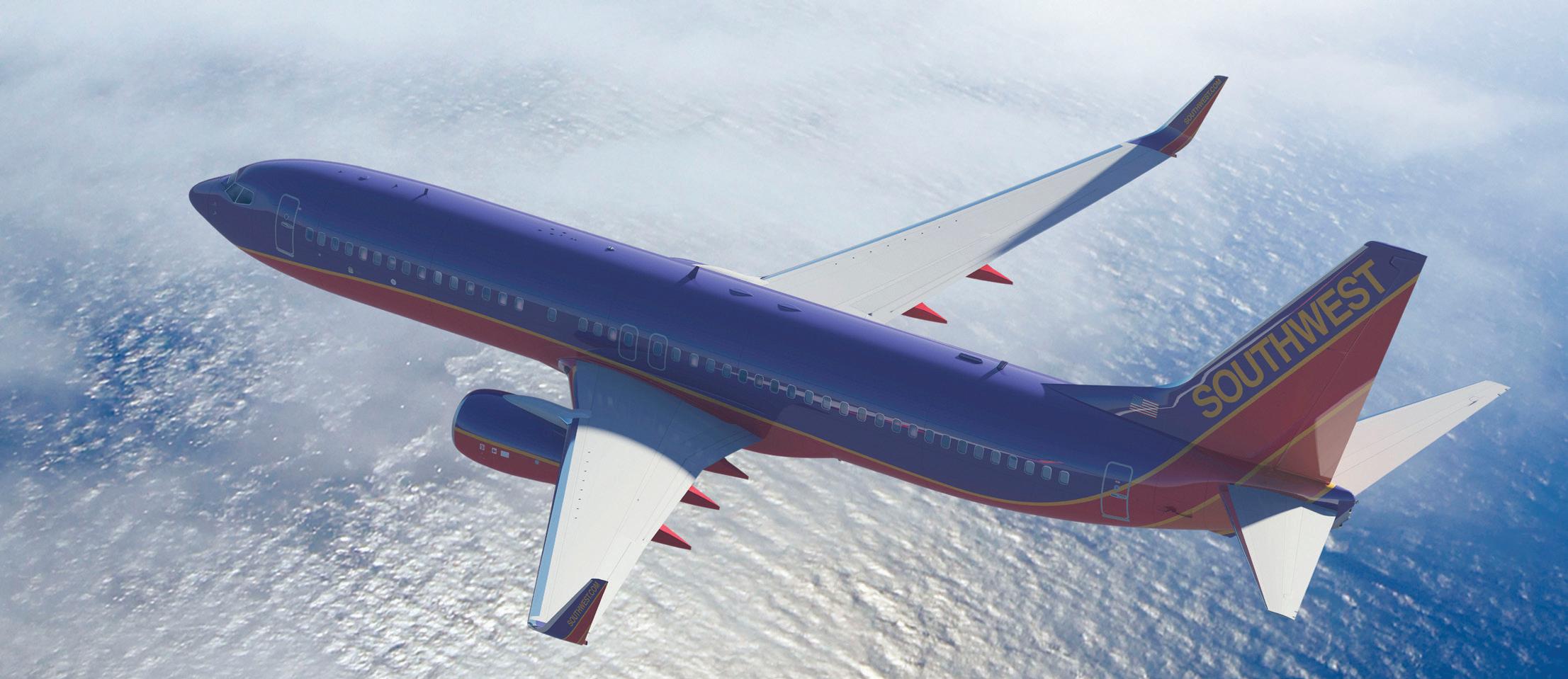
“Our CEO and our board of directors always have this airline’s best interests at heart,” Woods says. Despite the critical observations from analysts, investors and others who are studying Southwest from the outside, Woods makes it clear that Southwest management is fully engaged, particularly when looking to implement changes at the airline by not standing pat.
“We don’t just jump into a situation because everyone tells us to,” Woods says. “We strategically think about every move, thinking about what’s best for our customers. Our leadership team that we have so much trust in running this airline is looking at what’s best for this airline in partnership with our employees, in partnership with our customers.”
One way Southwest bucks trends is with its “two bags fly free” policy. Kerwin McKenzie of the Houston-based airline travel site and blog Passrider.com and former airline industry manager with Continental Airlines points to Southwest’s baggage policy as one area where change is possible.
“I’ve always liked Southwest, but I think one of the things with Southwest is that they’ve always been trying to separate themselves from the rest of the marketplace,” McKenzie tells The Lens. “In terms of low-cost carriers, they are the cream of the crop in the U.S. because they actually treat the customers well, and people like that.”
McKenzie believes that at some point, either Southwest has to make up the revenue from some other place or they have to start charging for bags to stay competitive with the rest of the industry.
Southwest finds itself stuck between high-cost network carriers like Delta, which can extract that revenue premium to support high costs, but finds itself squeezed by ultralow-cost carriers like Spirit and Frontier, who charge bedrock low fares because their operating costs are much lower than Southwest’s.
Industry analyst Tim Dunn, in an April 2024 Seeking Alpha blog post titled, “Southwest is Set to Soar Again,” wrote: “The company does best in markets which it
can dominate and where no carrier is significantly larger than Southwest. LUV’s business model makes it particularly vulnerable where it has to compete against carriers that offer a broader product offering. LUV is likely to pull back in highly competitive markets.” For Southwest, this may result in shifting capacity to its hubs at Dallas-Love, Houston-Hobby, Chicago-Midway, Baltimore/Washington, Nashville and Denver while retrenching where it does not have a dominant position, as it’s doing in Atlanta. “But for them to really survive, and they will, they have to shrink the network because the network is not working the way that it used to,” McKenzie says. “They have a lot of competition.”

“We don’t just jump into a situation because everyone tells us to. We strategically think about every move, thinking about what’s best for our customers.”

“IF IT DON’T MAKE DOLLARS, IT DON’T MAKE SENSE”
Rapper DJ Quik put it like that in his 1995 song “Dollaz + Sense.” The late Herb Kelleher, the visionary founder and CEO of Southwest, likely would have been at ease performing a rap duo with DJ Quik back in the day, both because of his sense of humor. which was part of the culture he instilled at Southwest, and his agreement with the sentiment behind the lyrics.
In the 1996 book Nuts! Southwest Airlines’ Crazy Recipe for Business and Personal Success, Kelleher said to authors Kevin and Jackie Freiberg: “Market share has nothing to do with profitability. Market share says we just want to be big; we don’t care if we make any money doing it. That’s what misled much of the airline industry for 15 years after deregulation. In order to get an additional 5% of the market, some companies increase their costs by 25%. That’s really incongruous if profitability is your purpose.”
Management consultant Mike Kinlow, who worked in finance and corporate intelligence with Northwest Airlines and Walt Disney Corporation, is the author of the book, The Laws of Profit “Airlines, just like other businesses, must be cognizant of the misalignment of workflow activities as they relate to profitability and sustainability,” he says. “Companies which focus myopically on market share and sales targets do not regularly analyze the cannibalization of profits due to the attainment of these goals.”
Dunn, in that April 2024 blog post, says Southwests’ finances remain in an enviable financial position. “LUV is one of only a couple U.S. airlines that pays a dividend, and LUV’s ratio is the best,” he says.
With the lowest debt-to-equity ratio of any major U.S. airline and billions in cash on hand, Southwest can take measured risks to return to profitability. It can even copy strategies taken by cash-strapped airlines, such as revisiting strategic airline alliances or creating partnerships to deliver business amenities through credit card partners such as lounges in key markets where it currently has none—all while expending little if any of its precious cash to improve its product.

Trey Woods SENIOR PROJECT MANAGER IN REGULATORY PROGRAMS AND COMPLIANCE AT SOUTHWEST AIRLINES
Gary Leff, aviation blogger of View From the Wing, wrote in March 2024: “This also wouldn’t be the first partnership Southwest has undertaken, even though they don’t currently have any. They code-shared with American Trans Air starting back in 2004 (Southwest acquired much of its Chicago Midway presence from ATA airlines). They announced a code-share with Canada’s WestJet in 2008, but it was never implemented. They also had an agreement with Mexico’s Volaris where they sold Volaris tickets on the Southwest Airlines website and offered interline bag checking.”
Dunn adds in a response to Leff’s blog post that interlining is a good way to grow revenue, including in markets where Southwest is dominant or has a privileged position such as intra-Hawaii. Additionally, penetrating Latin America is essential for Southwest, but they have to do it through partnerships. “I think this will go somewhere, but WN moves slowly and this will be no different,” Dunn says.
Kinlow agrees with Southwest’s pursuit of strategic alliances and joint ventures in the future. “Joint ventures and cooperation can be used by Southwest and potential alliance partners to gain market share and profits at lower customer acquisition costs for each participant,” he says. “Joint ventures are engaged when two or more companies have common and or complementary markets, which, if exploited correctly, will benefit all parties involved.”
The key to the future of Southwest, however, is the oversized commitment to customer service that has been its hallmark since the 1970s.

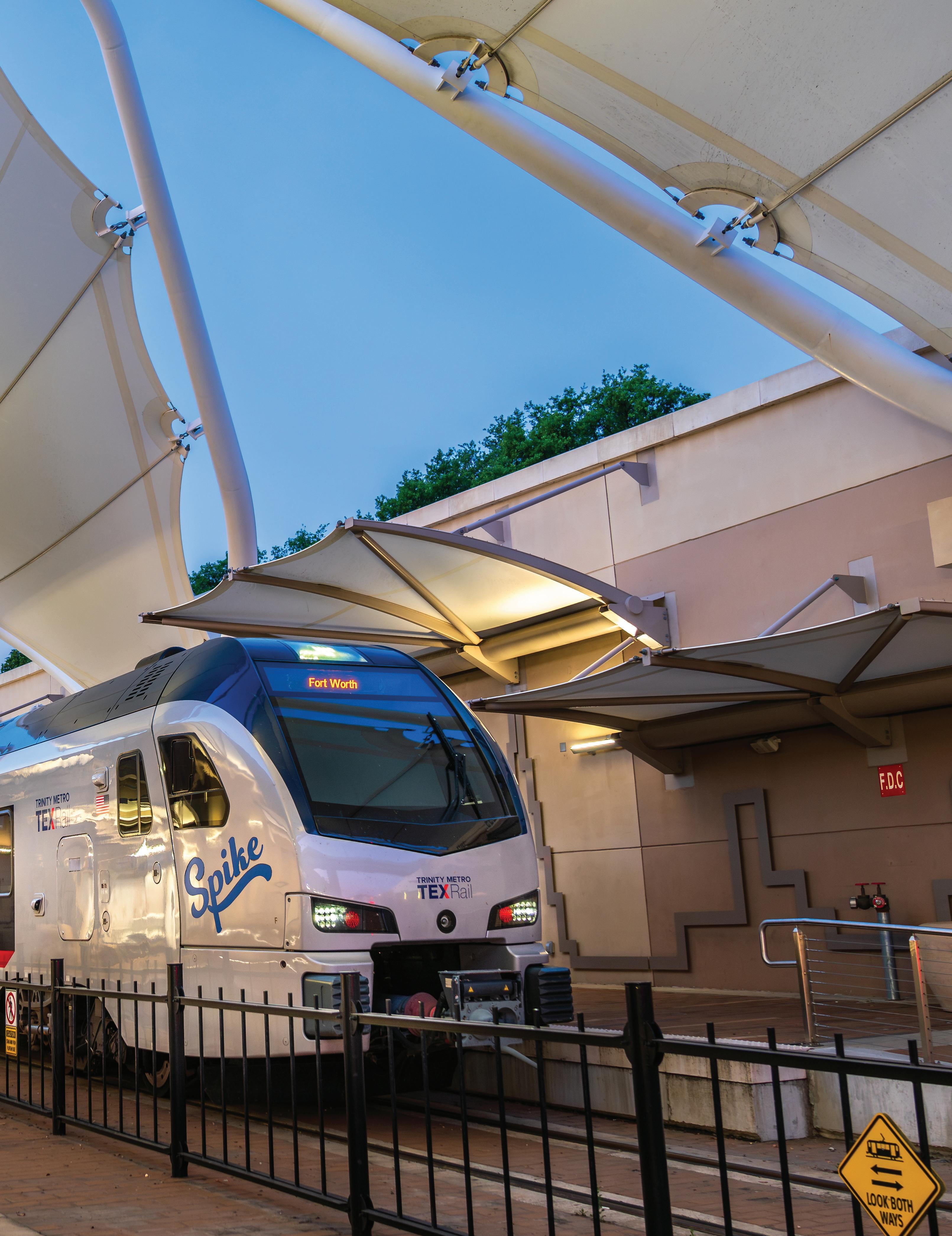
Trinity Metro’s next stop is leveraging innovation to lighten Tarrant County’s gridlock. by jennifer blalock, edd
here’s no denying that Tarrant County and its nearby neighbors are home to a dynamic list of swiftly growing cities, offering residents boundless opportunity and exciting expansion. The North Texas region continues to earn top placements on nearly every positive livability indicator, from safety to housing to quality education. But Tarrant County also appears on a list that reflects the significant challenges associated with the rapid growth the region is experiencing as a result of being such a great place to live, work and play. It’s a list early morning commuters, couriers, delivery drivers and anyone behind the wheel on a major roadway in Arlington, Fort Worth and surrounding counties are sure to confirm as they navigate the dreaded daily gridlock.
According to the 2022 Texas A&M Transportation Institute Mobility Division’s report on Texas’ Most Congested Highways, The North Central Texas Council of Governments, which includes all of Tarrant County, contains 39 of the 100 most congested roads in Texas. With a commute time just slightly above the national average and gas prices continuing to rise in an already tough economy, Tarrant County drivers, representing a vast array of businesses and families, are seeking new transportation options to save money, resources and time.
Thankfully, area leaders and visionaries like Richard W. Andreski, a 23-year transportation veteran and CEO of Trinity Metro, are championing the charge and already working to develop and expand sustainable public transportation options throughout North Texas. Andreski and his executive team are working hard to provide a menu of metro transit services that significantly decreases travel time and makes commutes easier for new businesses, their employees and their families.
Selected as the company’s President and Chief Executive Officer in 2022, Andreski not only leads the company’s nearly 800 employees but also manages Trinity Metro’s diverse public transportation portfolio. It includes a bus
network, the TEXRail commuter rail line, ACCESS paratransit, ZIPZONE on-demand rideshare services and Fort Worth Bike Sharing and vanpools. Trinity Metro also owns and operates Trinity Railway Express with Dallas Area Rapid Transit.
It would seem a daunting responsibility for most, considering the daily influx of transplants and relocating companies moving into the area, but Andreski takes the challenge personally. The ambitious CEO, who is just two years into his tenure, can often be found riding the TEXRail to the Trinity Metro offices, located in Fort Worth. In a recent Q&A with the Fort Worth Report, Andreski shared his perspective on how the continued development and improvement of the company’s services can help Fort Worth and Tarrant County attract more industries and labor.
“The other opportunity we’re missing is talent retention and attraction,” he says. “Companies, when they make location decisions, are looking for job markets, for places to do business where they have access to a large talent pool. There are people that want to be near transit; they don’t want to own a vehicle and they want that lifestyle. I think in Tarrant County, we need to offer that as an option. It doesn’t cost money to run transit. We actually generate economic returns for the city, the region.”


What’s the strategy then, for an innovative company like Trinity Metro to prepare for what tomorrow’s traffic and growth patterns promise while still offering low-cost, high-quality transportation in today’s challenging economic conditions? Andreski, his board and his senior leadership team have wasted no time in establishing ambitious goals. Trinity Metro’s leaders have made significant progress in identifying critically important transportation initiatives that aspire to transform the rider experience and increase the use of its services.
Some of the top strategic priorities for Trinity Metro include: Upgraded bus stops: In 2022, Trinity Metro unveiled two prototype elevated bus stops, offering real-time bus information, much-needed shade and comfortable benches for the pre-ride experience. The goal is to upgrade all 1,741 bus stops with a version of one of the prototypes, which range in cost from $9,000 to $15,000. Enhancements include offering a large canopy with solar-powered LED lighting, estimated time to wait, updates on delays, trash receptacles and glass protection.
Elevated transit experience: As convenient and costeffective as public transportation is, many are still hesitant to get on board, with memories of yesteryear’s uncomfortable seats, bumpy rides and cramped quarters. Rider comfort is a big concern, and Andreski and his team understand the importance of improving the rider experience. Upgraded seating and free wi-fi are just a few recent enhancements to improve the ride.
Andreski has also focused on improving customer and community relationships. He emphasizes the importance of accountability and
responsibility, working to develop and strengthen relationships with elected officials, corporate leaders and most importantly, Trinity Metro’s customers.
The company has plenty to toot its horn about as several customer service initiatives are already elevating its outreach to and connection with new and returning riders. In 2020, Trinity Metro introduced the ENVOY program to connect Trinity Metro employees to riders at key stops, offering insight and answering questions. Dedicated staff members, along with volunteers, aim to educate the community on how to use public transit. ENVOY offers a variety of signature programs to promote ridership and ease of experience.
Transit 101: While the idea of transit sounds interesting, many don’t ride because they dont know with how to travel on the bus, train, or light rail. This introductory program highlights the tools and resources needed to get on board and teaches individuals how to use bus and rail services in Tarrant County.
Operation Lifesaver: Safety is another concern for many. That’s why the Operation Lifesaver program includes a rail safety presentation, which is available for all age groups and provides education to help reduce the likelihood of collisions on or near railroad tracks. This 20-minute training teaches individuals how to stay safe whether they are walking, biking or driving near trains and tracks.
Travel Training: With Trinity Metro’s Travel Training, riders get to experience having their own travel coach. The program teaches the skills, confidence and independence to get passengers where they need to go. The team offers
“Trinity Metro is always striving to think ahead for what Fort Worth’s transit needs will be into the future.”

personal, step-by-step instructions on how to effectively use Trinity Metro’s transit system. The program, which can be customized to meet the requestor’s needs, walks participants through how to travel via bus, TEXRail, ZIPZONE and ACCESS paratransit service.
Community Events: As Trinity Metro continues to expand its community outreach, staff regularly host tables, attend events and make presentations on request throughout Tarrant County.
The Envoy program and Andreski’s dynamic leadership team are real-time examples of Trinity Metro’s authentic desire to prioritize the experience of rail customers first and strategically transform the transportation landscape of the North Texas region. Jay Chapa, a transportation consultant and active leader in the region’s urban rail planning, explains: “In order for Fort Worth to sustain its growth and continue to be one of the most livable large cities in the county, mass transit will need to take a larger role in the area of mobility. Seamless connections between popular destinations for both local residents and tourists must emerge.” Chapa commends Trinity Metro for its continued commitment to collaboration and partnership. “Our region is a collection of connected jurisdictions and collaborations between transportation agencies and other local municipalities is key to success. Trinity Metro continues to be willing to step into that role.”
Trinity Metro’s expanding footprint and stellar brand reputation have not escaped the attention of Tarrant County’s leadership. With the region continuing to expand, Fort Worth Mayor Mattie Parker announced the formation of a newly commissioned committee focused on urban rail (see story on page 44). According to the Mayor’s website, the Mayor’s Urban Rail Committee Supporting Economic Development & Tourism in partnership with Trinity Metro will be dedicated “to [exploring] opportunities for urban rail as an innovative transportation solution in Fort Worth.”
“We know that Fort Worth remains one of the fastest-growing cities in America, and current trends show that in 2100, the Fort Worth-Dallas Metro region will be the largest metro area in the country,” Parker says. “With that growth comes immense challenges and opportunities. I believe right now that we are wellpoised for the opportunity to explore urban rail opportunities, particularly in supporting our growing economic development and tourism industries.”
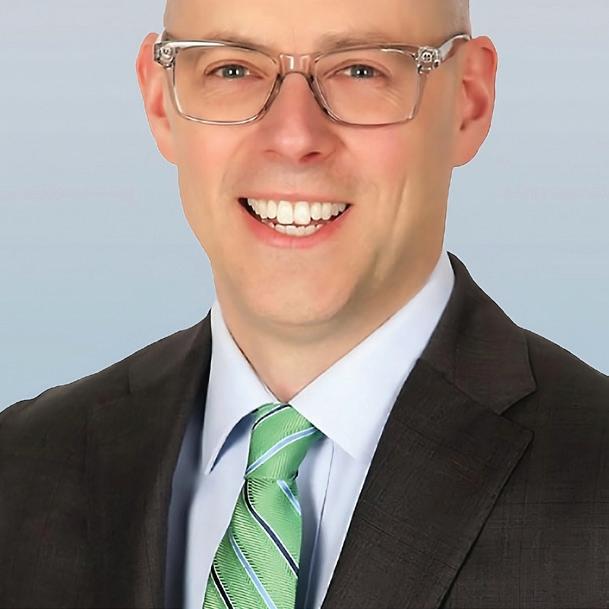
Richard W. Andreski CEO OF TRINITY METRO
The committee’s focus areas include:
Determining the feasibility of developing a fixed rail system designed to move people along the entertainment districts within Fort Worth based on potential ridership, costs and funding.
Exploring financial support and mechanisms of construction and operations.
Identifying potential legislative needs and priorities as they relate to economic development and tourism rail projects.
“Trinity Metro is always striving to think ahead for what Fort Worth’s transit needs will be into the future,” Andreski says about the mayor’s agenda. “We are glad to continue our collaborative work on this effort with the City of Fort Worth, this time with a focus on exploring solutions that support the dynamic economic development and tourism needs of a rapidly growing Tarrant County.”
All of these projects and initiatives offer hope that the area’s use of public transportation will grow in alignment with Trinity Metro’s ability to meet and exceed customer demands and expectations. A strong foundation of planned public transportation is a major selling point in corporate site selection and a necessity for the major capital infusion of being selected to host a World Cup, Olympic Games and many other national and international events.
Ensuring the necessary public transportation growth and services associated with future regional opportunities demands a healthy and continuous supply of new and emerging talent, demonstrating high-level skills and boasting hands-on experience. How does Trinity Metro expect to compete to recruit and retain the person-power necessary to drive, service and program the quickly transpiring technologies in public transit, such as the 300 electronic vehicles that have been added to its fleet of buses? Ideally, they’ll be able to replicate bright, engaged and invested young transportation professionals like Ambria Berksteiner, a Transportation Analyst who is employed at Chatham Area Transit
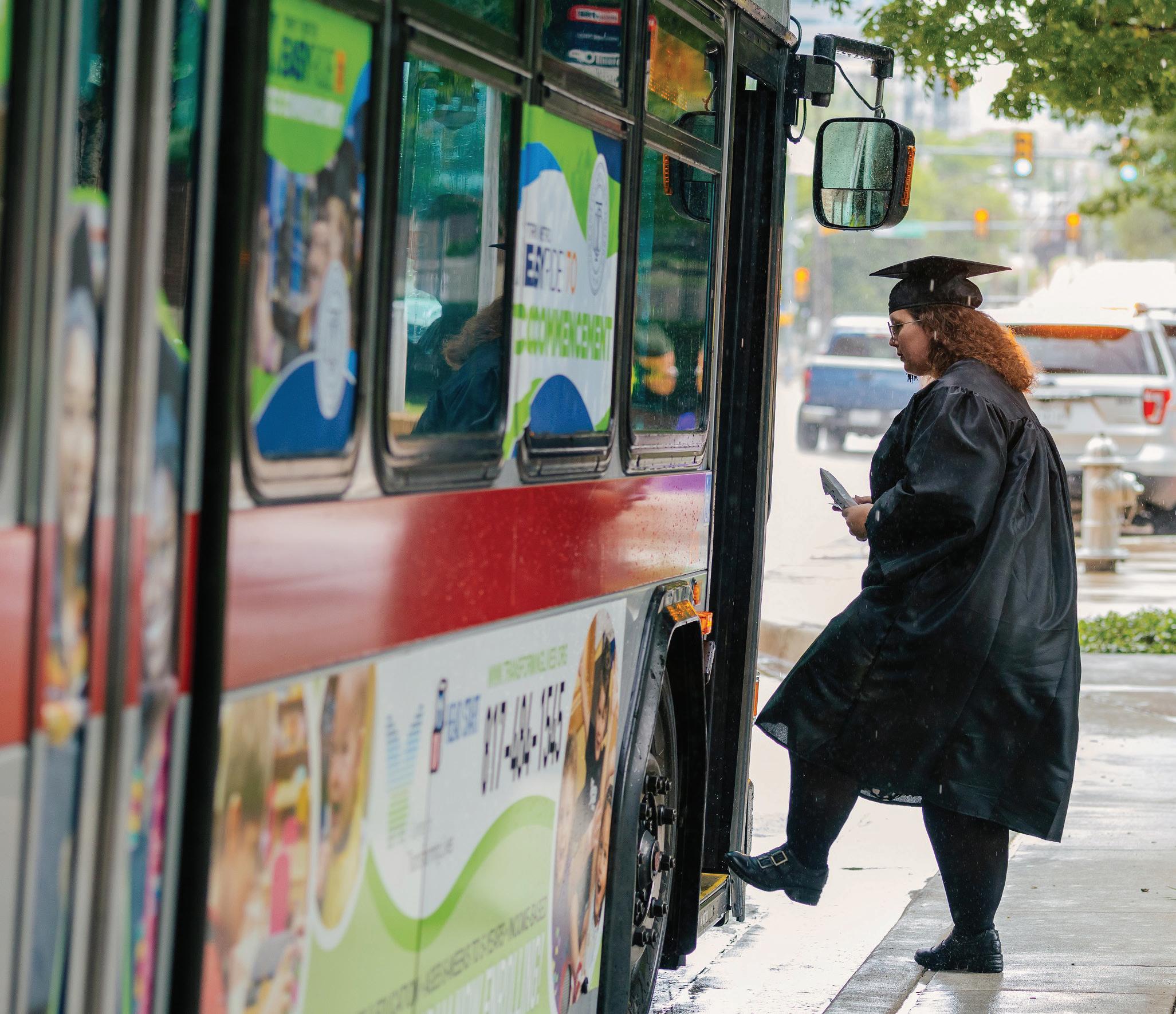
Tarrant County College is committed to its mission of providing access to quality higher education and training for all students in its community through its generous partnership with Trinity Metro, thanks to its innovative Easy Rider program.
To facilitate student access to any of its six campuses and corporate training centers, which span high-traffic areas in Fort Worth, Arlington, Hurst and Alliance, the program provides free rides for any student enrolled in at least three credit hours or 48 continuing education hours with a current, activated TCC student identification card. The TCC student ID card can be used on any Trinity Metro bus routes, Mini-movers, ZIPZONE on-demand rideshare van, Trinity Metro TEXRail and Trinity Railway Express (TRE) within Tarrant County. The program affords students time to focus on grades and training rather than gridlock, sparing them the stress of navigating traffic and offering cost savings on gas, car maintenance and upkeep, and bus fare.
“Trinity Metro’s partnership with TCCD means success for students and for area businesses that rely on talent,” said Trinity Metro President and CEO Richard Andreski. “Students are able to travel among all campuses without incurring any transportation costs because TCC pays their fares, which we offer to them at a discounted rate. We are proud of our partnership with TCC and the increasingly important role Trinity Metro plays in the growth and economic success story of Tarrant County.”
The success of the program is supported by the data. According to Trinity Metro, in May 2024 alone, they provided approximately 4,500 rides to TCC students. Overall, TCC students have taken nearly 304,000 rides since May 2018.
Ensuring the necessary public transportation growth and services associated with future regional opportunities demands a healthy and continuous supply of new and emerging talent, demonstrating high-level skills and boasting hands-on experience.

in Savannah, Georgia. Berksteiner, who holds a mathematics degree from Spelman College and a Master’s degree in industrial engineering, wasn’t necessarily envisioning that her professional trajectory would take her into public transportation. A year and a half into her position, she’s not only speaking the transit jargon, she’s also fully convinced of the importance of planned public transportation to community well-being and prosperity. As an analyst, her workday duties can range from community outreach to analyzing ridership data and traffic patterns.
Recently, Berksteiner was a part of the planning team that met with Savannah's Chatham School District leaders to discuss the launch of their Student Zero Fare Pilot Program. The year-long program offers students across the county, including college and university attendees, the opportunity to ride any fixed route and paratransit buses at no cost.
Berksteiner, whose energy and passion for her work is on par with Andreski and the Trinity Metro leadership team, explains that the opportunity to connect the dots of the behind-the-scenes complexities of establishing city bus routes and schedules was eye-opening. “I didn’t realize all the levels of involvement in things
like establishing a new bus stop or adding a route,” Berksteiner says. “From architects to developers to the state department of transportation, there are a multitude of stakeholders involved in the process.”
When asked to identify the skills necessary to thrive in the field, Berksteiner emphasized that mass transit offers careers for everyone, including those with automotive and mechanical trade certifications, degrees in communications and marketing, and those with talents in critical thinking and problem-solving.
According to Don Shetter, director of maintenance at Trinity Metro, maintaining the 15 EV buses the company operates requires the following top skills for tech candidates:
• Great attitude and good aptitude, plus safety awareness not only for themselves but also their working partner and all personnel in their surroundings
Use of PPE gear
• Proper use of High Voltage Tools
Ability to use different DVOM meters
Better-than-average automotive electrical knowledge
• Current training and product knowledge
“Our maintenance department has led the way in the Bus EV world. EV was new in the bus market, and we faced the challenges head on,” said Don Shetter, director of maintenance at Trinity Metro. “We have continued to grow and advance in product knowledge, performance diagnostics and battery technology.”
As Tarrant County’s primary transit provider, Trinity Metro’s talent pipeline is strengthened by the collaborative relationships it has with area K-12 schools and post-secondary institutions. In addition to Easy Rider, its signature ridership program for students with Tarrant County College District (see sidebar), Trinity Metro’s labor and workforce needs can also rely on TCC’s extensive degree programs, certifications and corporate training to develop its current and future staff. Whether it’s one class or a non-credit seminar, the options at TCC and other North Texas colleges are equipped to prepare the necessary talent.
Who are Trinity Metro’s mass transit users, and what are their expectations? Trinity Metro continuously tracks its ridership to learn just that and anticipate and exceed their desires. In May 2024, the company logged 659, 858 riders across its service spectrum. The majority of the ridership, 57.8%, boarded a Trinity Metro bus, with rail coming in as the second-most utilized public
transportation option. To further contribute to public trust, Trinity Metro offers a publicly available dashboard documenting ridership, safety and reliability.
The profile of a public transit user continues to expand beyond students and workers headed to the job. Lisa Moldovan, an accounts receivable professional who lives in Long Island, happily relies on New York’s extensive bus, train and subway system to get anywhere and everywhere she wants to go on workdays and on weekends. It saves her time and money and prevents her from worrying about parking, traffic incidents and expensive tolls. “Public transportation has had a hugely positive influence on my life,” Moldovan says. “Not only does it give me an alternative to getting to work, but socially, it also makes things much easier.”
Moldovan says she takes the train to avoid traffic on busy weekends. Her parents live 30 miles away, and the highways can be extremely busy on summer weekends and holidays as they live by the water. Being able to take the Long Island Railroad out to see them makes life significantly easier.
“I never have to worry about parking,” Moldovan says. “I never have to worry about traffic. Granted, there are sometimes hiccups when there is subway construction, but it happens more rarely than road traffic and closures.” She often laments her prior experiences living in cities without access to mass transit, as she documents her travels regularly on social media. “It definitely made life more difficult, especially pre-rideshare.”
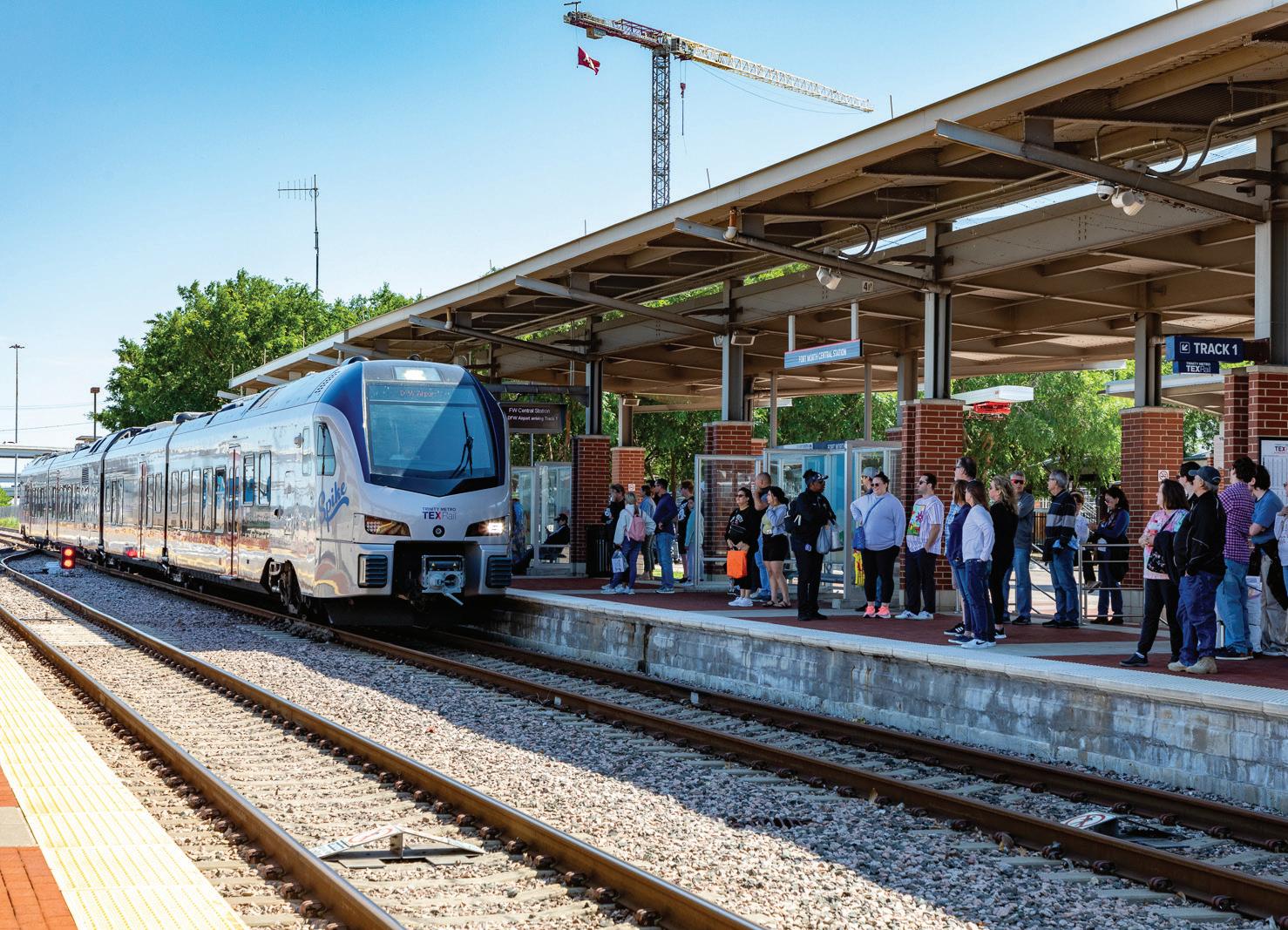
In a similar order, Trinity Metro employees are developing a turnkey public transportation system like that of New York as they further assess, analyze and forecast the company’s expanding service model for the Tarrant County region. Surrounded by the collective support and commitment of the Mayor’s urban rail committee members, higher education providers and other transportation stakeholders, it’s likely the next decade will have all Tarrant County residents and businesses on board for the next generation of Trinity Metros’ public transportation services. The future looks fast, and gridlock, thanks to Trinity Metro’s innovative leadership, will be a thing of the past.

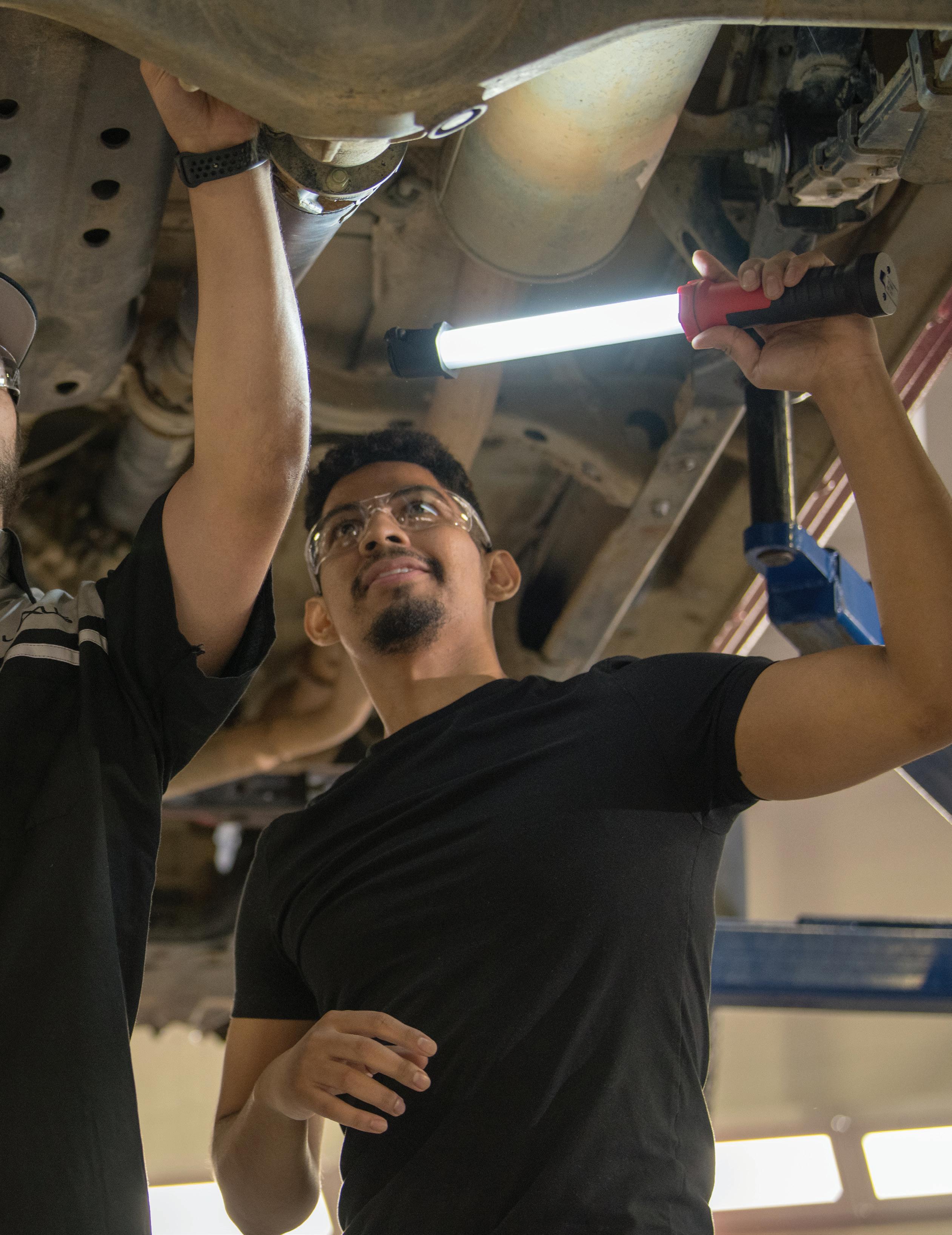
TCC’s Automotive Technology Program keeps accelerating. by greg fulton
If your car’s check engine light should come on,
there may be no better place to confront it than greater Fort Worth, home of Tarrant County College’s award-winning and ever-expanding Automotive Technology Program on the South Campus.
Historically offering associate degrees and certifications in automotive service technology and collision repair—from rebuilds to finish, from engine analysis and service technician to diesel repair—the program expanded its curriculum in 2018 with a high-profile collaboration with Toyota to offer both an associate’s and two certification programs within the Toyota Technician Education Network.
This year, announced in April, the college is partnering with the National Institute for Automotive Service Excellence to establish an ASE certification exam site on TCC’s South Campus.
“This is a very important and really required certification to have in the workforce, and we have brought on the testing center for our students and to support the growing demand in Fort Worth,” says TCC South President Dr. Dan Lufkin.
Students can complete their coursework and then pursue a streamlined ASE certification to enter the workforce. The Automotive Technology Program serves approximately 300 students each year and has awarded 1,642 degrees and certifications since the 2004-05 school year.
TCC’s Automotive Technology Program is a boon to not only current students but also faculty and the community at large.
“Our faculty members can also meet and update their certifications, and we also support all of the
incumbent workers in the area who may need to upskill or test and keep their certifications current,” adds Lufkin. (Walk into most any dealership or large repair shop and notice the ASE certifications often framed in the lobby.)
NEW AND HISTORIC OFF-CAMPUS COLLABORATIONS
Netty Matthews laughs. Well, chuckles. “Yes, you can get that fixed,” she says of the dreaded check engine light.
As senior vice president for advocacy of the Fort Worth Chamber of Commerce (and on the job overall for 35 years), Matthews is an integral part of the intertwined and collaborative automotive industry Lufkin describes.
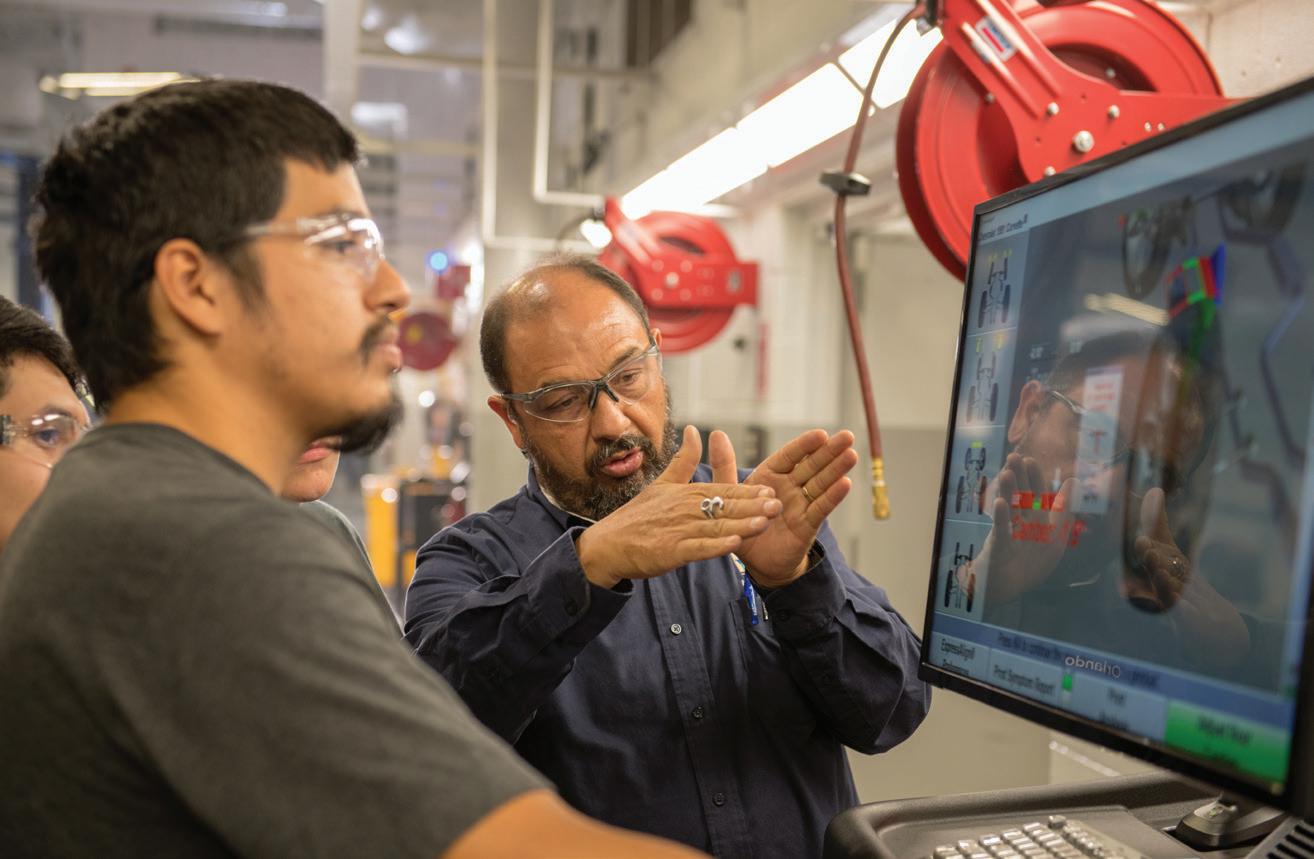

According to Netty Matthews, senior vice president for advocacy at the Fort Worth Chamber of Commerce, Fort Worth will always be known as Cowtown. This is because of its origins as an Army post and latter, as an 1800s cattle drive nexus, enhanced by the arrival of the railroad. The Stockyards and Cowtown Coliseum are just two of the reminders of its proud and historic origins. But look across Tarrant County, and just maybe car county may take hold.
In Arlington, the General Motors assembly plant appropriately goes Texas big with the manufacturing of SUVs: the Chevrolet Tahoe and Suburban, the GM Yukon and the Cadillac Escalade.
The Tarrant County Tax Office notes that the number of vehicle registrations and transfers are the third most in the state. And a perusal of the number of car dealerships in the county, shown on the website imotors.com, easily approaches 50.
According to the governor’s office of economic development and tourism, Tarrant County College contributes to the 40,000 automotive sector workers in the state, good for seventh nationally. And if we must bring Dallas into it, the DFW area is home to 14 automobile sector corporations, the largest concentration in the state.
“This is a very important and really required certification to have in the workforce, and we have brought on the testing center for our students and to support the growing demand in Fort Worth.”


“Our automotive experts are critically important,” says Matthews, as she explains the depth and breadth of the local industry and the need for collaboration with South Campus. Not just dealerships and garages, she says, but “we have companies that have huge fleets of vehicles that need to be maintained. Look at American Airlines, our bus service, Amazon and all the distribution companies here, they all have huge car fleets that need to be maintained.”
It’s a sentiment echoed by Brendon Harrington, president of Autobahn Fort Worth and chair of the Fort Worth Chamber’s Automotive Task Force.
“We’ve had tremendous success previously uplifting youth through the auto business, by providing career planning, mentoring, hands-on training and tools,” Harrington says. “Once they realize the expanse of the opportunities and the upward glide path that’s possible, they really get excited and engage with the process. We’d like to bring that model to Fort Worth as well. Once the students reach a core mechanical skill set, they can then branch off into their desired career direction, whether it’s as an auto, aviation or body shop mechanic, as an entrepreneur starting their own support service business, or in one of the many other customer-facing positions that enable the technicians.”
To that end, Matthews is announcing a new automotive task force being created by the Chamber, which is set to launch this summer.
The task force aims to gather and fine tune all aspects of the industry. “It’s rapidly changing,” Matthews notes, pointing to the growth of electric vehicles as one example. “Companies in Fort Worth want to provide resources to the Tarrant County College program. Jobs in
this industry are very viable and have fairly high incomes, and we want to make the students aware. That’s one reason we are putting the task force together, and we are going to work very closely with the automotive program at TCC to highlight that program to local companies.”
Already embedded with the dealerships, for example, the task force can expand existing relationships to other sectors of the economy. “We are dialed in with all of the North Texas automobile associations,” Lufkin says. “There’s not a dealer our faculty don’t know.” Soon, according to plan, those relationships will grow.

Together, Lufkin and Matthews have already been part of the evolution of the South Campus automotive program. To be a college means to meet certain aspects of accreditation and oversight.
Here is where Lufkin, Matthews and the Texas Higher Education Coordinating Board come together. The board and its advisory committees perform required assessments of higher education curriculum, always with an eye on the future.
Established in 1965, the nine-member board and a student representative work with institutions of higher education on curriculum, while also advocating for policy goals with the state legislature and administering its grant program, among other duties. The board includes 14 advisory committees on various aspects of education and industry. The board’s goal is to provide 60 percent of all Texans ages 25 to 64 with a higher education degree, certification or credential by 2030.
On behalf of the four South Campus automotive career paths (automotive service, collision, diesel and the Toyota program), Lufkin meets twice yearly with the board and its advisory committee. Overall, an impressive 90 members of the community act in an advisory capacity with the automotive
program, comprised of representatives from Toyota, General Motors, Ford, Subaru and Chrysler, as well as more than two dozen dealerships, independent shop owners, tool and parts distributors and the city of Fort Worth.
Matthews attends those meetings, providing workforce and economic data and “what we learn from local companies” about the expertise and capabilities of the graduates. “We also work with the Tarrant County Workforce Solutions Group,” she says, adding another example of the interconnected collaborations making for a strong industry throughout Tarrant County.
“The board comprises a compliance standard. As president of the campus, I want to hear its recommendations and bring in the automotive industry to inform our curriculum,” says Lufkin. “They are extremely complimentary of our automotive programs.”
They are not alone. The automotive programs have consistently been recognized, achieving several best value designations by TradeCollege.org, for example, and a Top Ten ranking of alumni salary gains by GradReports.
“It really does come full circle,” says Matthews of the components in place and on the horizon that combine to inform and expand the twin engines of workforce development and economic growth.

Fort Worth Mayor Mattie Parker guarantees that green spaces won’t be sacrificed for development. by adam pitluk, phd
The mark of a big-city mayor is to propose an agenda and then implement it with minimum disruption to his or her constituents. The mark of a good big-city mayor is to fulfill that agenda with bipartisan support. Three years into her tenure as the 45th mayor of Fort Worth, Mattie Parker is proving to be a great mayor.
In addition to campaigning (and then fulfilling that campaign promise) to work with all elected officials and residents irrespective of party affiliation, Parker has bridged the party gap while aggressively moving forward to solve some of the long-nagging issues in the city. She created an initiative to raise the number of police and firefighters to historic levels, adding 106 new Fort Worth Police Department positions and 76 new Fire Department positions so far this year. She has also partnered with the Fort Worth Chamber of Commerce to create the Fort Worth Economic Development Partnership, a task force aimed at recruiting new businesses and jobs to Fort Worth while ensuring that they have the tools they need to succeed. Under Parker’s stewardship, Fort Worth was named both the most pro-growth city in America and the Best Large City in Texas for starting a business.
Yet one metric by which to measure Parker’s success often gets overlooked amidst the pantheon of achievements: Fort Worth is adding more roads, bridges, buses and trains, all while earmarking more land for parks and green spaces. Indeed, Parker understands that in the Metroplex, growth is inevitable, but in Fort Worth, that growth is handled smartly.
In her State of the City speech in October 2023, Parker evoked a line from Joni Mitchell’s 1970s protest song, “Big Yellow Taxi,” (which also happens to be her mother’s favorite song). Parker addressed the audience and referenced the lyric, “You don’t know what you’ve got ‘til it’s gone. They paved paradise, put up a parking lot.” Addressing the audience, Parker said: “I don’t know about you, but I don’t want to pave paradise. I believe we have to meet this moment.”
It was the perfect song to meet a moment when demand for improved infrastructure was surging, yet it remained critical to keep Fort Worth pristine so that people would want to live and play outside of normal business hours. “I was using that particular quote to illustrate our need to invest in the preservation of green spaces and outdoor spaces in Fort Worth,” Parker tells
“As someone who loves Fort Worth so much, you can’t put such emphasis on transportation and infrastructure that you ruin the topography and aesthetic of a city we all love and appreciate. So it’s a balance.”

The Fort Worth City Council recently approved a $1.7 million park improvement budget for Gateway Park, located in east Fort Worth. This 791-acre park includes various recreational facilities. “Gateway Park stands as a cornerstone in our park and recreation master plan, unlocking endless possibilities for community, environment and economic development,” says Mayor Mattie Parker.

The Lens. “We launched the Good Natured initiative, and our goal is to preserve at least 10,000 acres of open space in the next five years.”
That’s an optimistic plan to be sure, especially since Fort Worth was the 12th-largest city in America according to the 2020 census. Since then, thanks to both policy and geography, Fort Worth is surging and will likely climb the ranks as businesses continue to flock. But Parker isn’t waiting for the moving vans to pull up before she implements her vision for a commutercum-pedestrian friendly city.
Part of the reason why Parker is so hawkish on preserving natural beauty and open spaces in Fort Worth is because of her roots in the pastoral (and very open) hamlet of Hico, Texas. Growing up surrounded by cattle ranches and lush pastures, Parker grew to appreciate not just the outdoors, but the almost medicinal, calming effect nature has on a person’s psyche. That and she wanted to raise her three children in the same safe, friendly atmosphere in which she was raised.
Yet the 1,500-resident town of Hico, Texas, has never—in its 140-plus year history—had to deal with traffic problems and/or congestion. As a student at the University of Texas at
Austin, Parker saw how, as the city became a boomtown, traffic crippled the city. She doesn’t want to see Fort Worth step into the same pothole.
“Anything around transportation is quite complicated,” she says. “And it also will have multiple partners you have to work with.” In the City’s case, you have the Texas Department of Transportation, the North Central Texas Council of Governments, Tarrant County and other municipalities in the area. “Those big projects don’t happen overnight.”
At the same time, however, Parker witnessed firsthand after two decades in national, state and local affairs the long slog of policy implementation when not done correctly. So she’s putting her foot to the proverbial pedal and accelerating her vision at a turbo pace.
Parker maintains a robust schedule that sees her in and out of the city while striking various synergies with strategic partners. “I do worry about the idea of paving paradise,” she says. “As someone who loves Fort Worth so much, you can’t put such emphasis on transportation and infrastructure that you ruin the topography and aesthetic of a city we all love and appreciate.”
To be sure, there will be paving going on under Parker’s tenure, but synchronously, paradise will be preserved.
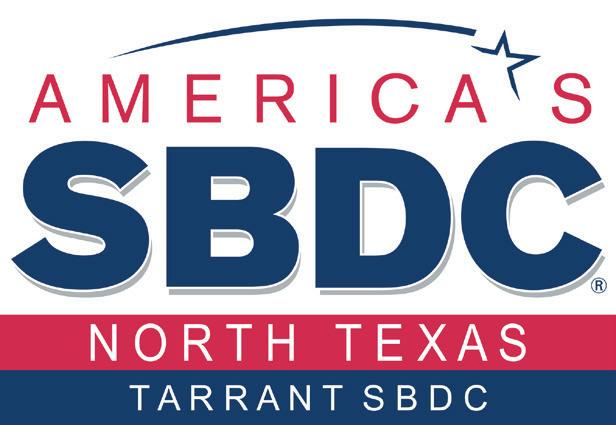

Tarrant Small Business Development Center (SBDC) provides management and technical assistance to local small businesses and aspiring entrepreneurs throughout Tarrant County The consulting services provided are at no cost and training services are at a nominal fee
Business consulting services are customized, one on one face-to-face or virtual at no cost Consulting services provided are business plan development, capital acquisition, marketing, regulatory compliance and more. The Tarrant SBDC provides services to a diverse population, including special emphasis groups; women, minorities and veterans who are seeking to start or grow their business.

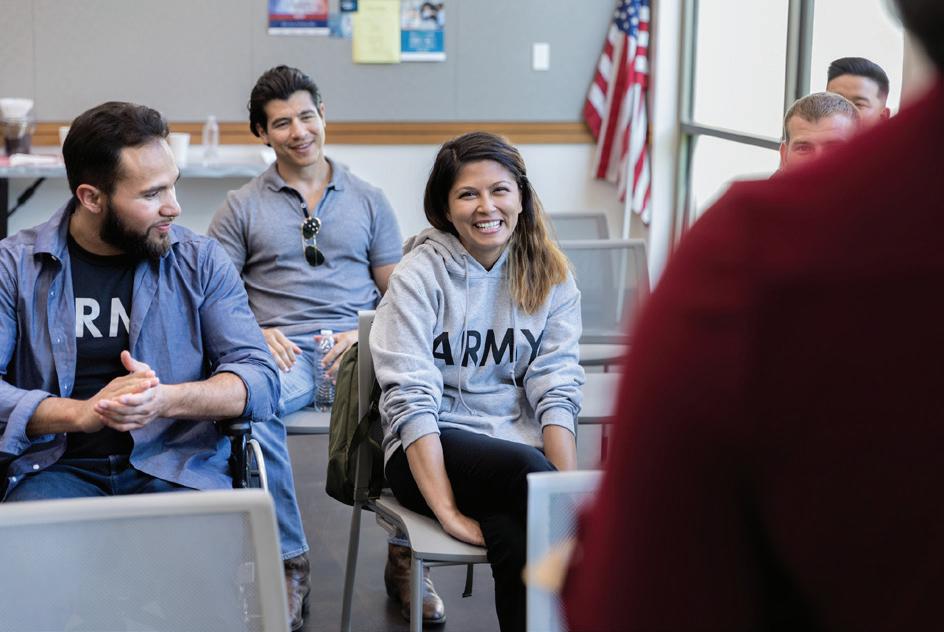
The Tarrant SBDC is hosted by Tarrant County College and is one of twelve field centers of the North Texas SBDC Network Funded in part through a cooperative agreement with the U S Small Business Administration (SBA) SBA’s funding is not an endorsement of any products, opinions or services.
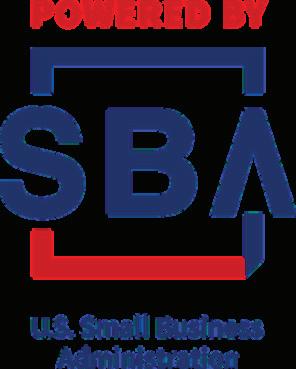
Accounting & Bookkeeping
Business Planning
Cash Flow Models
COVID-19 Support
Disaster Services
Financial Planning
Government Contracting
Legal Structures
Licensing & Permits
Market Research
Startup Cost
Target Marketing
Special arrangements for the disabled will be made when requested in advance Advising services are offered by the Tarrant Small Business Development center without regard to race, color, age, national origin, religion, sex or disability. Special provisions will be made for limited-English speaking individuals.
For accommodations, please contact the Tarrant SBDC at 817-515-2600
www tarrantsbdc org


Fueled by two TCC grads, Perot Airport at Alliance has become pivotal to the growth of the Metroplex. by tyler hicks
As he watched the elephants take flight, Chris Ash thought about all the work that went into this unique project. It started when the then-CEO of the Dallas Zoo approached Ash and his team with a dire warning in summer 2015:
There are 12 elephants in South Africa, the CEO said, and they’re going to die if we don’t move them.
Thus began a fast and furious bidding process in which Ash and his colleagues competed against dozens of other airports.
Ash is the senior vice president of aviation business development at Perot Field Fort Worth Alliance Airport (AFW for short), so he’s accustomed to selling companies on the unique value proposition of his airfield. During his nearly 30-year career, the proud Tarrant County College grad has helped bring everyone from Amazon Air to Gulfstream Aerospace to the Drug Enforcement Agency to the cargo airport roughly 15 miles north of Fort Worth. International rescue operations may have been a first, but the skills he used to score major tenants came in handy when it was time to save some elephants.
“Our philosophy is, you take care of your customers and your stakeholders,” he says. “If you take care of people first, the rest should come pretty easily.”
Because he’d built genuine relationships with his tenants and staff, he was able to assemble a successful bid and a thorough plan for transporting the animals to Fort Worth, then dispersing them to zoos throughout the country.
“The question was, ‘How do you import 12 elephants on a 747?’” he says. “That’s not something you do every day. But we did it.”
The story illustrates the unique capabilities of AFW, which has become a critical “inland port” and a boon for the Dallas/Fort Worth business community. The airport is located in the heart of the 27,000-acre, master-planned AllianceTexas community, which has injected over $111 billion into the North Texas economy. One of the region’s biggest wins was the arrival
of Gulfstream, the aerospace company that, in 2022, invested more than $55 million into a maintenance, repair and overhaul facility based at the airport.
Further, both the community and the airport are premier examples of public-private partnerships. Founded in 1989, AFW is a collaboration among Hillwood, the city of Fort Worth and the Federal Aviation Administration.
“I think it’s impressive that the airport exists in the first place,” says Christian Childs, another TCC graduate and the president of Alliance Aviation Companies. “Back then, placing an airport of this size in the middle of an agricultural area with no development in the area took a lot of trust and a lot of guts, with a little bit of luck swirled in there, too.”
AFW was designed to help with traffic from Dallas/Fort Worth International Airport (see sidebar), and at the time, it was the first airport built to be solely industrial. From the beginning, its champion was Ross Perot, Jr. the masterful salesman and Hillwood chair who also helped usher Alliance into existence.


In 1964, Dallas and Fort Worth had one of the best kinds of problem: They were growing too fast to not have an airport.
The Civil Aeronautics Board came to town and requested the two cities build a joint airport, and the rest, as they say, is history. Fifty years of history, to be exact.
Like AFW, the Dallas/Fort Worth International Airport was originally built in the middle of nowhere. Ten years after that board’s recommendation, the 17,000-acre facility opened with four terminals, three runways and 66 gates. In Texas fashion, it was the biggest airport in the world at that time—and, as readers likely know, it seems to get bigger every year. In 2019, the same year AFW expanded its runways, its neighbor set a personal record with 73 million passengers on the year. It helps, of course, that those 66 gates have more than tripled, just in time for DFW airport’s 50th birthday.
“Alliance has become something bigger than they ever imagined, but the airport is still the centerpoint. It’s the anchor of the region.”
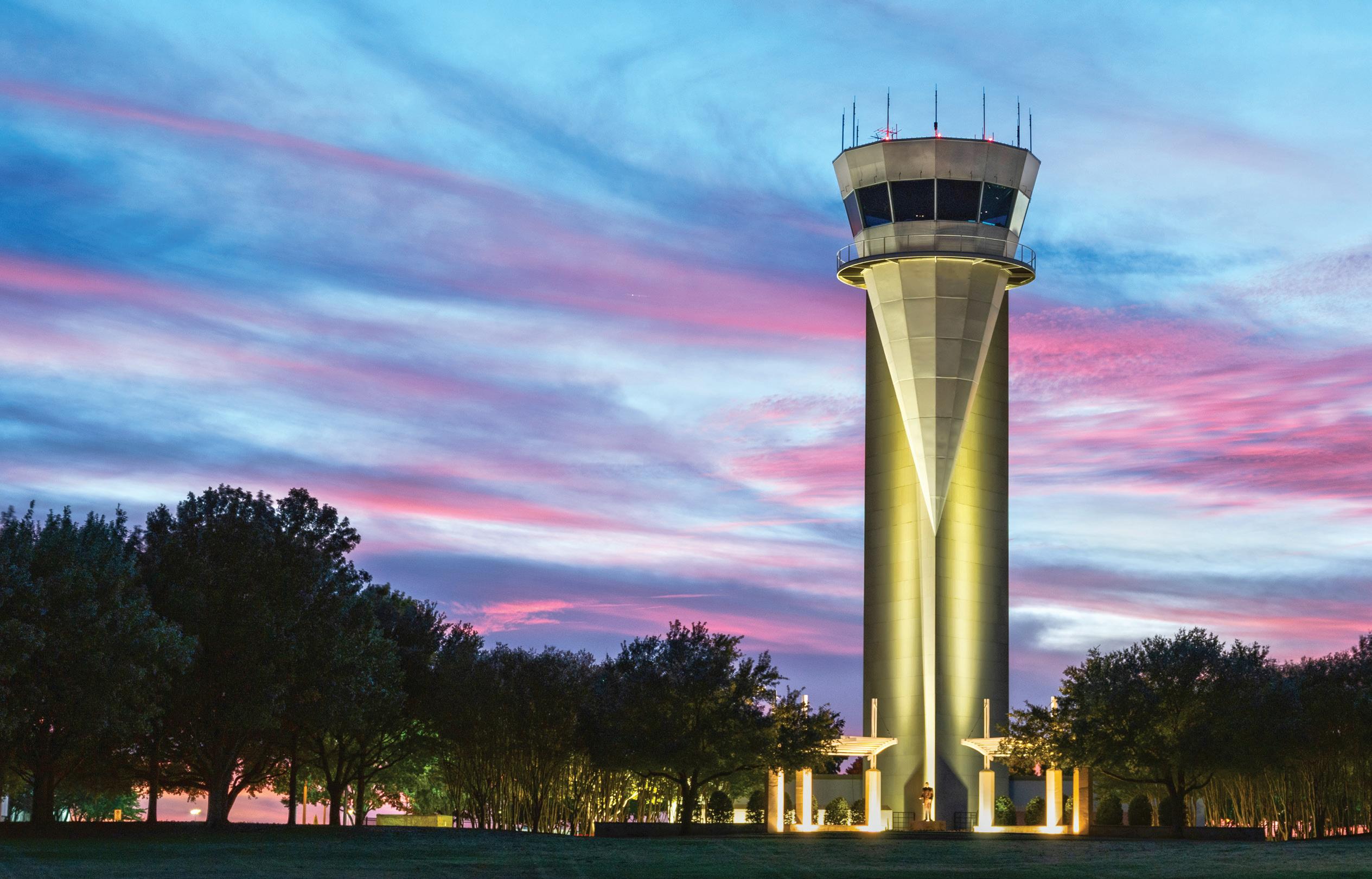
Yet according to Childs, even the prescient Perot couldn’t predict that the development would bloom into a residential hub complete with seemingly ever-expanding shopping, dining and entertainment.
“Alliance has become something bigger than they ever imagined, but the airport is still the centerpoint,” Childs says. “It’s the anchor of the region.”
Buoyed by the expansion of the surrounding area, proud TCC graduates like Childs and Ash have used some of the same elbow grease and excellent salesmanship that helped Perot bring toptier businesses to Alliance. And like all great businesses, they’ve used one milestone to build on the next.
For instance, in 2018, they spearheaded a massive project that extended both runways to 11,000 feet, providing more room for even larger cargo aircraft. Shortly afterward, Amazon announced that AFW would become one of its regional hubs: a site from which multiple cargo flights depart daily. The initiative included a new facility and the addition of hundreds of jobs to the region.
“The phrase ‘it takes a village’ comes to mind,” Ash says. “Everybody had to come together and work really cohesively to get Amazon to choose AFW. Deals like that don’t come around very often.”
Amazon was followed by Gulfstream and FedEx, which houses its southwest sorting hub at AFW and recently re-upped its contract for another 20 years. Each successive win has burnished the airport’s reputation while enhancing what it offers to the state, the country and the world.
“We’re one of the only places in the country where you can own or long-term lease a facility—and in some cases, own property—with direct access to an airport,” Childs says. “That’s very rare in the world.”
This doesn’t mean Team Perot is slowing down anytime soon. Quite the opposite, in fact.
Both Childs and Ash, who got their start fueling jets at the airport, point out that there is still plenty of land that could be used for development. That could mean a new maintenance and repair operation, more cargo storage or more manufacturing sites. Or maybe all three.
Yet no matter what the future holds, Childs says the airport will stay true to its roots.
From the public-private partnership that got the airport started, to partnerships like the one between the airport and FedEx, it was relationships that got AFW to where it is today. It’ll be relationships that get them where they’re going, too.
To illustrate this point, Childs recounts a story from 2019, when the airport wanted a key parcel of land to expand its operations. The land was family-owned, and Childs was trying everything to reach them. Texts, emails, phone calls—none of it worked. So Childs had his customer service team bake some chocolate chip cookies, and he knocked on the family’s door. They spent a couple of hours talking and building a rapport, and ultimately, the family agreed to sell.
“We have all of this fancy equipment, and we’re one of the world’s greatest cargo airports,” he says. “But sometimes, you’ve got to turn back the clock and visit with some cookies.”


We have many ways to partner with your organization:
Volunteer Engagement
Employee Giving
Matching Gifts
Naming Opportunities
Philanthropic Investment
Sponsorships and so much more…

TCC prepares and elevates the next generation of aviation leaders.
by jacquetta dantzler
At Tarrant County College’s Corporate Solutions and Economic Development (CSED), we believe in the power of mentorship to transform careers and industries. Our mentorship programs are designed to create opportunities within organizations, fostering the next generation of leaders. We put particular emphasis on mentorship in the aviation industry, and we drew insights from two distinguished professionals.
Regi Sealey’s aviation journey began at an early age. Learning to fly from a family friend, he flew solo at just 15 years old and earned his pilot’s license at 16. His passion for aviation was ignited the first time he flew on a plane as a young child, feeling an immediate connection to the skies. Sealey pursued a degree in aviation and was later accepted into the Navy, a challenging path that required landing a plane on a ship—a feat not many achieve.
As a retired commercial pilot, Sealey has traveled the world, amassing beautiful stories of adventure. He is actively involved in the Organization of Black Airline Pilots (OBAP), which seeks to prepare the best candidates for careers in aviation. Sealey emphasizes the importance of ongoing professional development, particularly in decision-making, a critical skill for pilots. He notes that there is much more automation now than there was when he started his journey—such as GPS replacing manual chart plotting and iPads replacing heavy bags of books.
Sealey states that piloting is a great career, and the need for skilled pilots and effective mentorship remains as vital as ever. He was afforded opportunities through relationships and

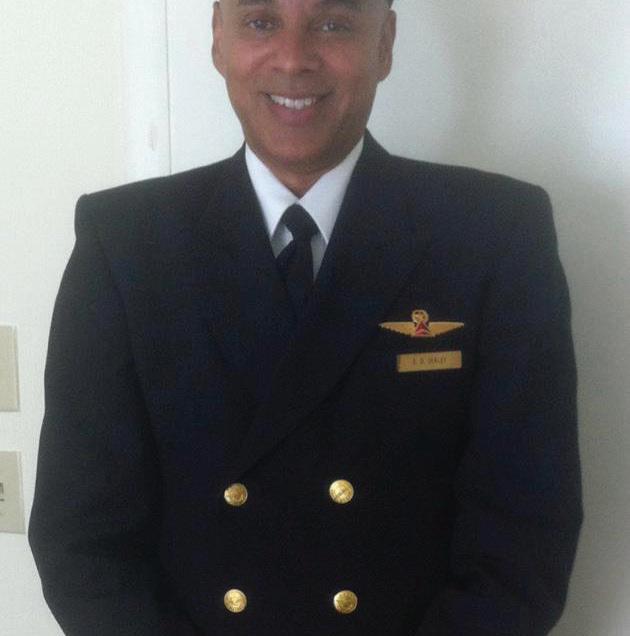
dedication. Today, he is driven to build relationships with the next generation of pilots as a mentor.
“The need for pilots is growing, and so is the need for mentors,” Sealey shares. “Technology is changing piloting, but the human element, the mentorship, is irreplaceable.”
Clint Grant, former dean of TCC Business and Industry and now director of the aviation program at Texas Woman’s University, also attributes his entry into aviation to early exposure and mentorship. His fascination with airplanes began in childhood. He recalls watching airplanes in awe as a small kid. A ride in a family friend’s airplane further fueled the intrigue with flight.
Starting his career in aviation mechanics, Grant understands the importance of a solid foundation in both mechanics and piloting.
Grant is leading TWU’s new Doswell School of Aeronautical Sciences. His two decades-plus of experience and leadership have equipped him to be a key contributor in creating and launching the program. The aviation program’s top goal is to produce more women commercial pilots.
Grant is a staunch advocate for continuing education. He believes that students should learn from industry professionals who regularly hone their skills.
“Everyone is on a lifelong journey of learning, exploration and innovation,” Grant asserts. This philosophy aligns perfectly with CSED’s mission to provide professional development, coaching and metorship.

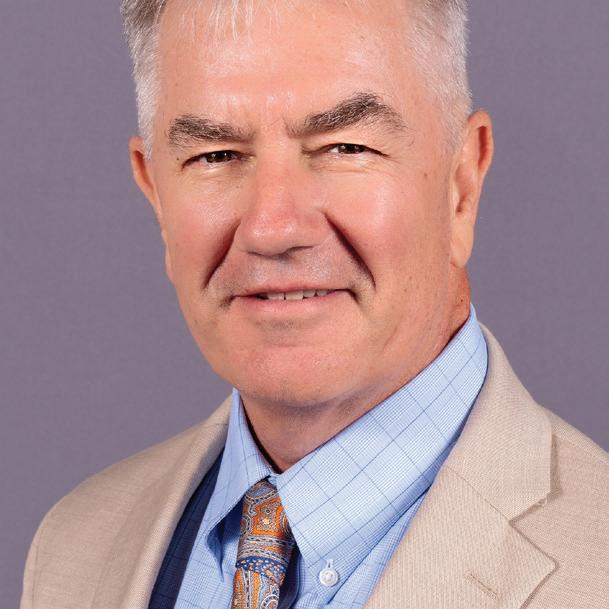
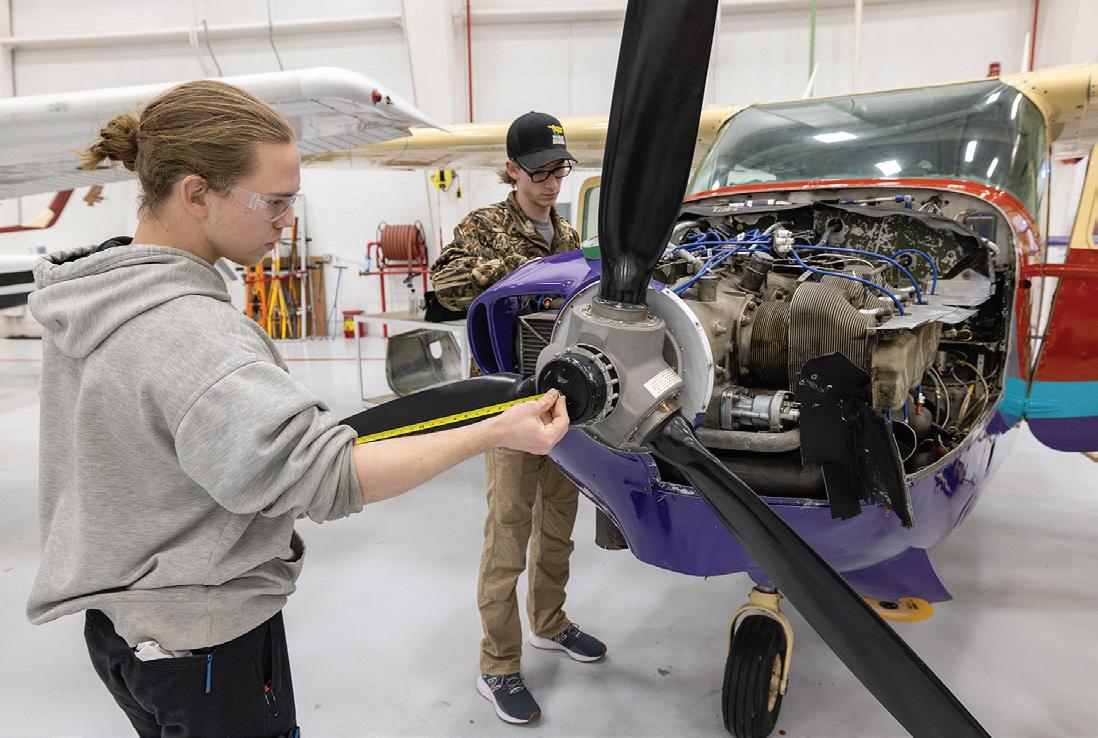

At CSED, we understand that mentorship is not just about imparting knowledge; it’s about inspiring and guiding the next generation of aviation professionals. Our programs aim to bridge the gap between academic learning and industry demands. By fostering relationships between seasoned professionals and aspiring pilots and mechanics, we create a pathway for continuous growth and development.
We have a framework for mentorship that we teach at CSED, an acronym for MENTOR. To effectively mentor someone, you need to accomplish the following:
Model: Mentors will increase their effectiveness by modeling the actions, attitudes and behaviors they want to see repeated. Equip: A good mentor will equip their team members with the resources required to achieve the goal.
Navigate: A mentorship component includes guidance on navigating the challenges of work and life.
Think: In any industry, organization, team or position, there are ways of thinking that will increase success and effectiveness as well as those that will not. Mentors have the opportunity and obligation to help their mentees understand the ways of thinking that will increase their effectiveness.


Opportunity: We can only talk hypotheticals for so long. At some point, part of the learning process is the opportunity to try and either succeed or fail. Mentors can provide opportunities for mentees to test themselves in real-life situations.
Relate: Connecting with mentees will increase their effectiveness every time. When mentors work to build a relationship with their mentee, they will learn what motivates them. When mentors know what motivates their mentee, mentors can remind them why they are pursuing their goals when they feel overwhelmed. These stories underscore the profound impact of mentorship in aviation. Mentorship in aviation is a cornerstone for growth and innovation. As the industry evolves with technological advancements, the guidance and support from experienced professionals remain crucial. Mentorship in every industry is equally crucial. At CSED, we are committed to nurturing this spirit of mentorship, ensuring that our community continues to soar to new heights. By investing in mentorship, we are not only shaping the future of the workforce but also creating a legacy of excellence and leadership for generations to come.
Test your knowledge about planes, trains and automobiles.
by jacquetta dantzler
Test your knowledge of the latest transportation trends and workforce initiatives for Tarrant County, based on insights from The Lens magazine. This quiz covers advancements at Tarrant County College, and in public transportation as well as strategies of aviation.
Each question is crafted to not only test your recall but also to drive your understanding of how these elements contribute to the economic and social landscape of our region.
Get ready to explore the fascinating intersections of technology, transportation and workforce development.
Let’s see how much you know about the pivotal changes leading to soaring growth and efficiency in Tarrant County!
1. Which Texas city is currently testing fully autonomous rides across 43 square miles?
a) Houston
b) Austin
c) Dallas
d) San Antonio
2. What is one of the main advantages of autonomous vehicles mentioned in The Lens?
a) Reduced need for parking spaces
b) Enhanced entertainment options during travel
c) Significant reduction in traffic fatalities
d) Lower manufacturing costs
3. Which Fort Worth transportation project aims to bring a train line into a major job center near Southside?
a) TEXRail extension into the hospital district
b) High-speed rail to Dallas
c) Expansion of the bus network
d) Development of new bike lanes
4. Which program allows TCC students to ride any Trinity Metro service for free?
a) Student Transit Program
b) Easy Rider Program
c) College Commuter Program
d) TCC Transit Pass
5. What is the estimated value of GDP that air transport will contribute over the next 20 years according to the International Civil Aviation Organization (ICAO)?
a) $3 trillion
b) $4.5 trillion
c) $5 trillion
d) $5.7 trillion
6. What type of community development takes priority for Fort Worth’s future transportation needs?
a) More walkable communities
b) Increased industrial zones
c) Expansion of suburban areas
d) More high-rise buildings
7. What did Southwest Airlines’ former president Colleen Barrett famously say about the airline’s business?
a) “We’re in a customer service business. We just happen to fly airplanes.”
b) “Flying is our primary goal.”
c) “Market share is everything.”
d) “Profit comes before service.”
8. According to the 2023 Boeing Pilot and Technician Outlook, how many new aviation professionals will be needed through 2043?
a) 1 million
b) 2.3 million
c) 3 million
d) 4.5 million
9. What significant role does the Moving a Million Master Transportation Plan aim to achieve by 2050 in Fort Worth?
a) Reduce airline flights
b) Fully integrate multimodal transportation system
c) Increase the number of private vehicles
d) Limit public transportation options
10. How many job roles in the aviation industry will need to be filled through 2043, according to CEATL’s projections?
a) 400,000 pilots
b) 300,000 mechanics
c) 649,000 professional pilots
d) 700,000 avionics technicians
11. What is the target year for Fort Worth’s Moving a Million Master Transportation Plan?
a) 2025
b) 2030
c) 2040
d) 2050
by rick gosselin | illustration by samantha ozeale tucker
When the Dallas Cowboys open the NFL season this September in Cleveland, they will depend on their franchise quarterback Dak Prescott for three hours that Sunday afternoon to deliver a victory over the Browns.
But for the other 26 hours the team spends on the ground in Cleveland that weekend, the Cowboys will depend on Craig Glieber to deliver.
Glieber is the director of team travel and logistics. It’s his job, essentially, to move a small village each of the eight weekends the Cowboys spend on the road this season. He arranges the transportation, lodging, meals and security for the 200 or so members of the team’s traveling party, which includes players and coaches plus the team’s public relations, social media, marketing, video and football support staff.
The process starts for Glieber in April. The Cowboys know who and where they are playing in 2024; they just don’t know when. Because the Cowboys do not play the Browns on an annual basis like they do the Eagles or Giants, Glieber traveled to Cleveland before the NFL draft in April to scout hotels. He needed to find lodging with 190 rooms and suites plus five rooms of various sizes on the ballroom level for meetings, meals and medical concerns.
The sprint to the season then begins in May when the schedule is released, identifying Cleveland as the first road trip.
“You can’t do too much until the schedule comes out,” says Glieber, the son of legendary network sports broadcaster Frank Glieber.
First come negotiations with American Airlines for a charter airplane, a 777—a big plane to carry a big traveling party. Then Glieber has to choose a hotel and negotiate the specifics—does it have availability and space for a group this size plus a kitchen that can meet the dietary and nutritional demands of the team?
Next, Glieber must schedule the buses— one to transport team members from the practice facility in Frisco to the airport and six more to transport the team from the Cleveland airport to the hotel, both on Saturday. Then six buses to transport the traveling party from the hotel to the stadium on Sunday and six more to move the team from the stadium back to the airport after the game for a return to Dallas. One more bus awaits the plane in Dallas to take team members back to the practice facility.
Then comes the negotiations for police escorts in Cleveland—three of them. First, to the hotel from the airport on Saturday and then both to the stadium before the game and to the airport after the game on Sunday. Security is also arranged at the
hotel for the duration of the team’s stay. They meet the team at the hotel to pass them through crowds in the lobby to their rooms. Then personnel are stationed on the floors housing the players for their safety and privacy.
“The Cowboys have a bigger fan base than most teams,” says Glieber, knowingly.
The meals are also on Glieber’s checklist: smoothies and submarine sandwiches for the players as they board the plane to Cleveland, followed by a meal on the plane. There’s another meal or snack that night at the team hotel plus a breakfast or brunch Sunday morning, depending on the time of the game. Box lunches await the players as they leave the stadium for the airport after the game, then they have dinner on the flight home.
Glieber arranges for a truck to transport game-day necessities to the city. It’s a 53-footer that carries trunks of medical and video supplies plus player equipment to cover every weather condition—rain, sleet, snow, heat or cold. The gameday uniforms also travel on the truck. If the game is in New England or on the West Coast, the truck leaves Thursday night. But for games in the Midwest, such as Cleveland, the truck leaves Friday morning for setup at the stadium Saturday.
Glieber himself flies to the city on Thursday, where he meets with the officials from the airport, hotel, buses, stadium and police to make sure the visit by the Cowboys is a smooth one.
“I’ve done this a long time [20 years] so the stress isn’t too bad,” Glieber says. “I don’t get too worried until the day of arrival—golly, I hope the plane’s on time, the buses are there and everything is ready at the hotel.”
Glieber returns home with the Cowboys on the team charter Sunday night. Then on Monday, he’s back at his desk finalizing the details for the next road trip.



Join host Jacquetta Dantzler of TCC Corporate Solutions and Economic Development, as she engages in insightful discussions with influential leaders, unveiling the secrets to navigating Tarrant County and North Texas’ dynamic business world. Tune in for an exclusive peek into strategic conversations that shape the landscape of the workforce, ensuring you stay ahead in the ever-evolving world of professional growth.
Listen to the podcast at corporate.tccd.edu/categories/podcast and check back regularly for new episodes!
Step into the future of workforce development with The Workforce Lens podcast. tccmeansbusiness.com







